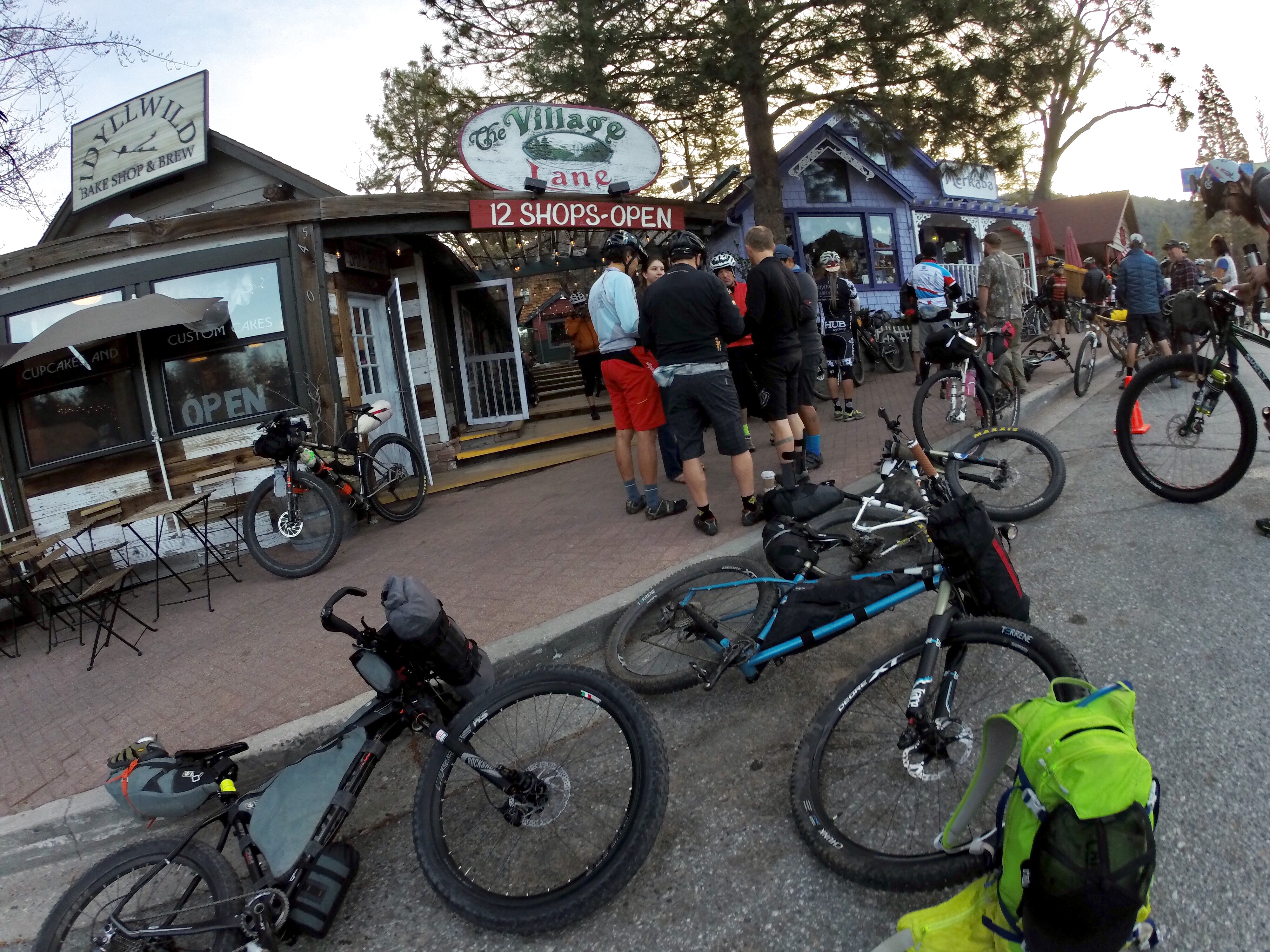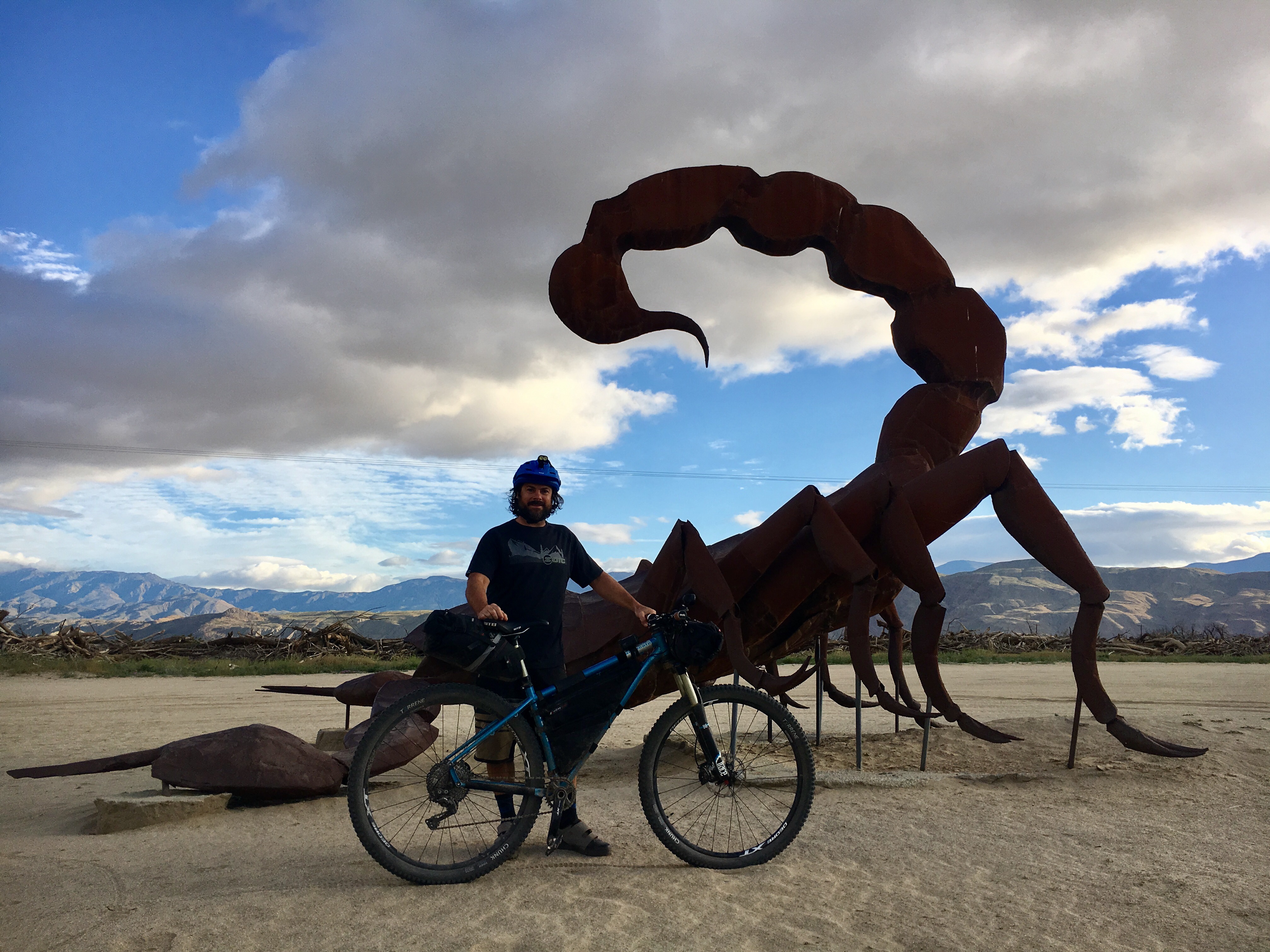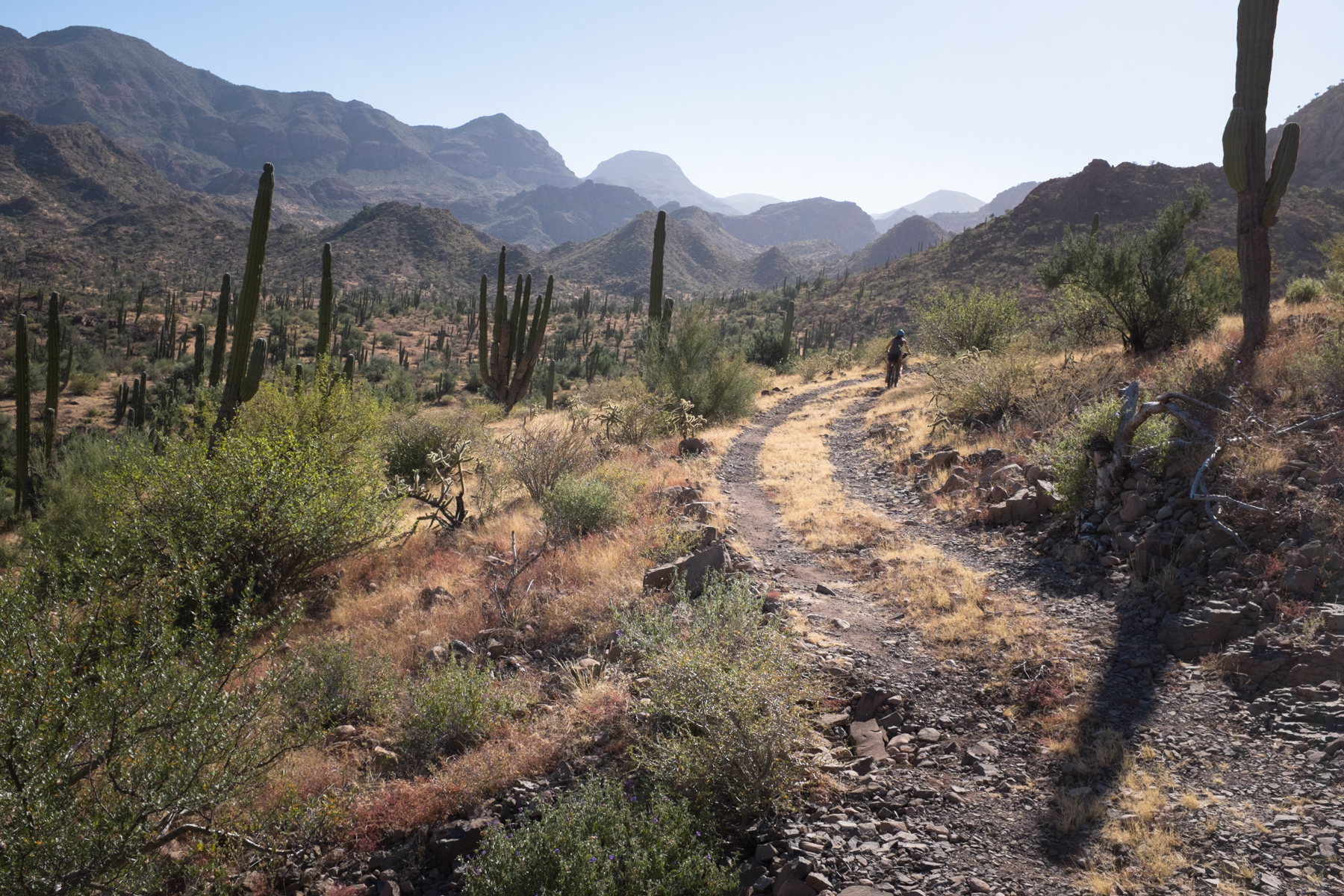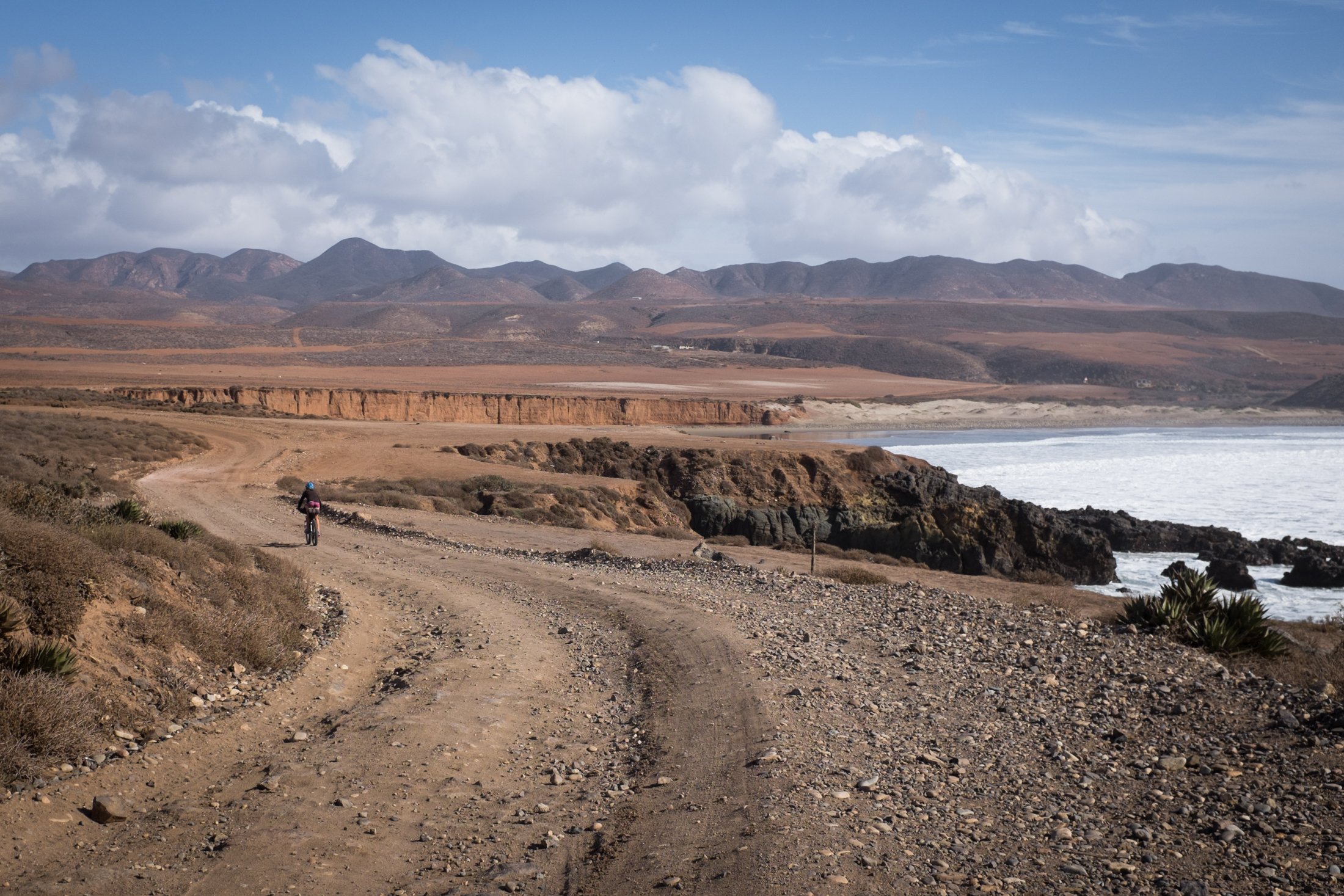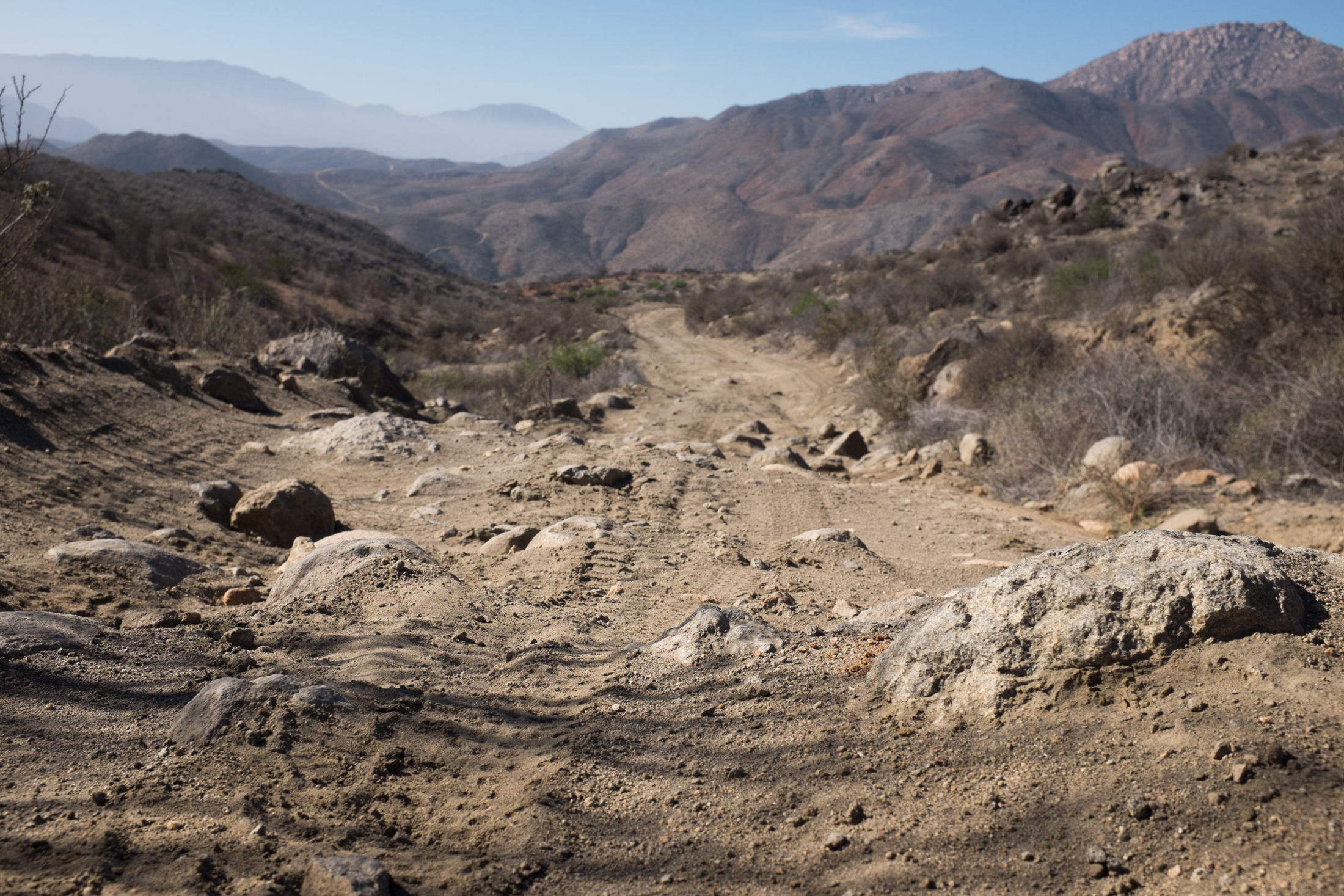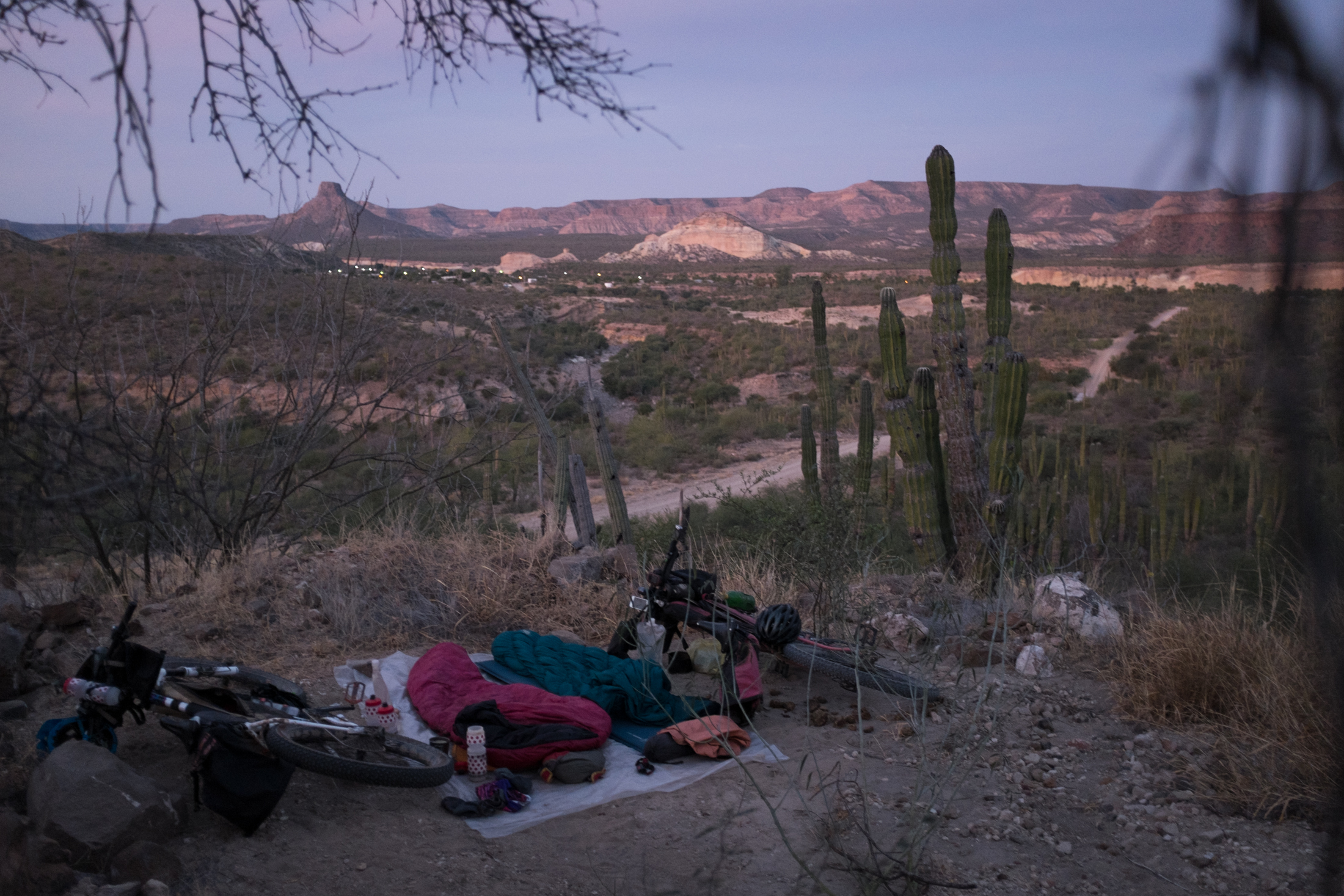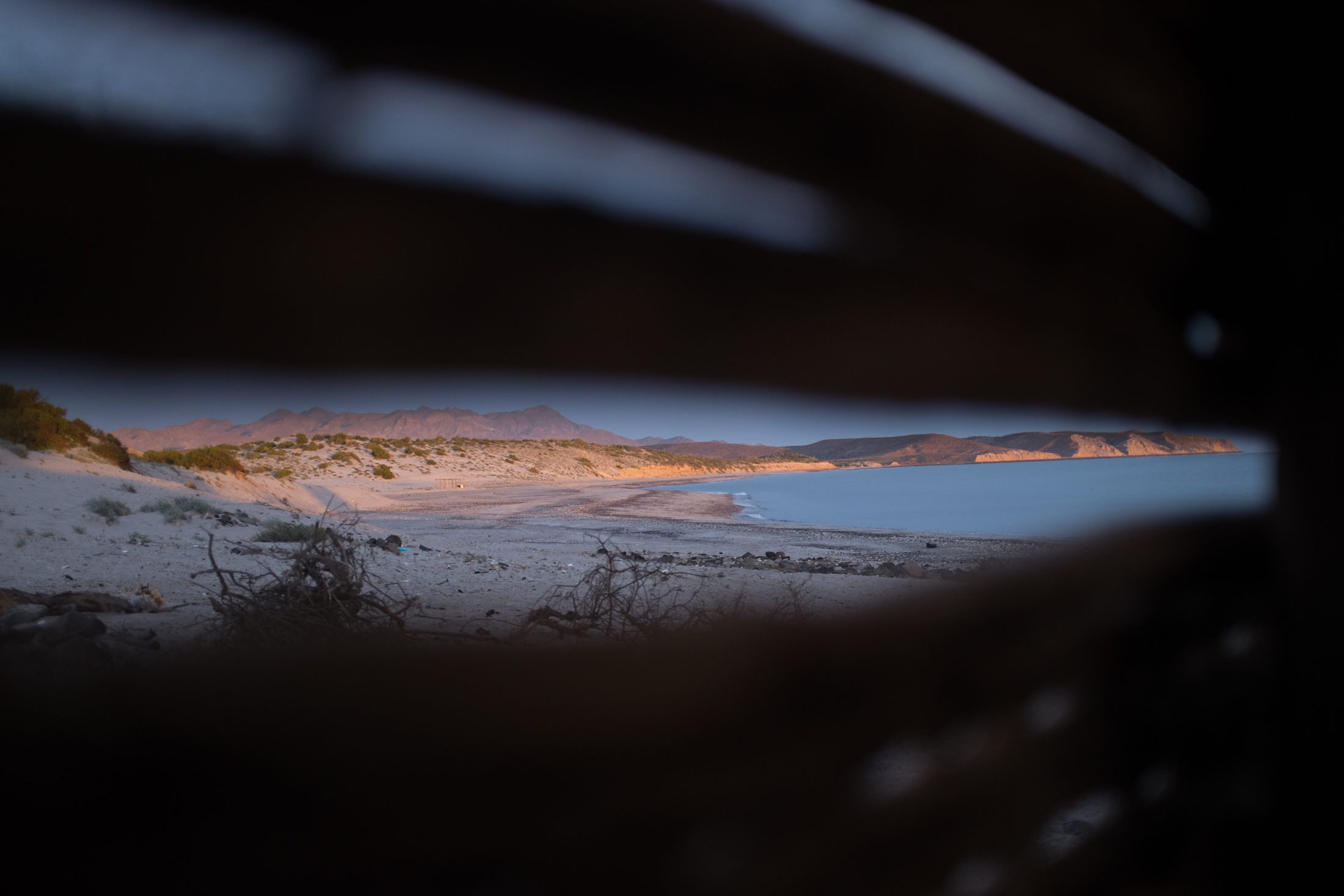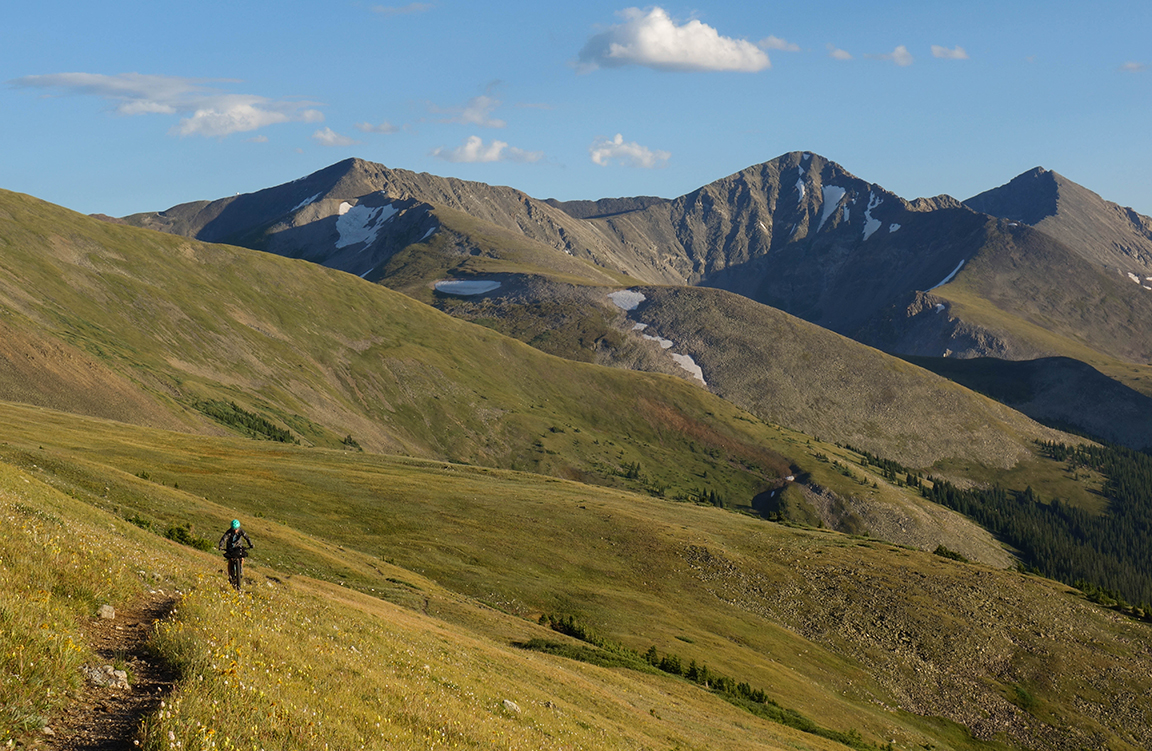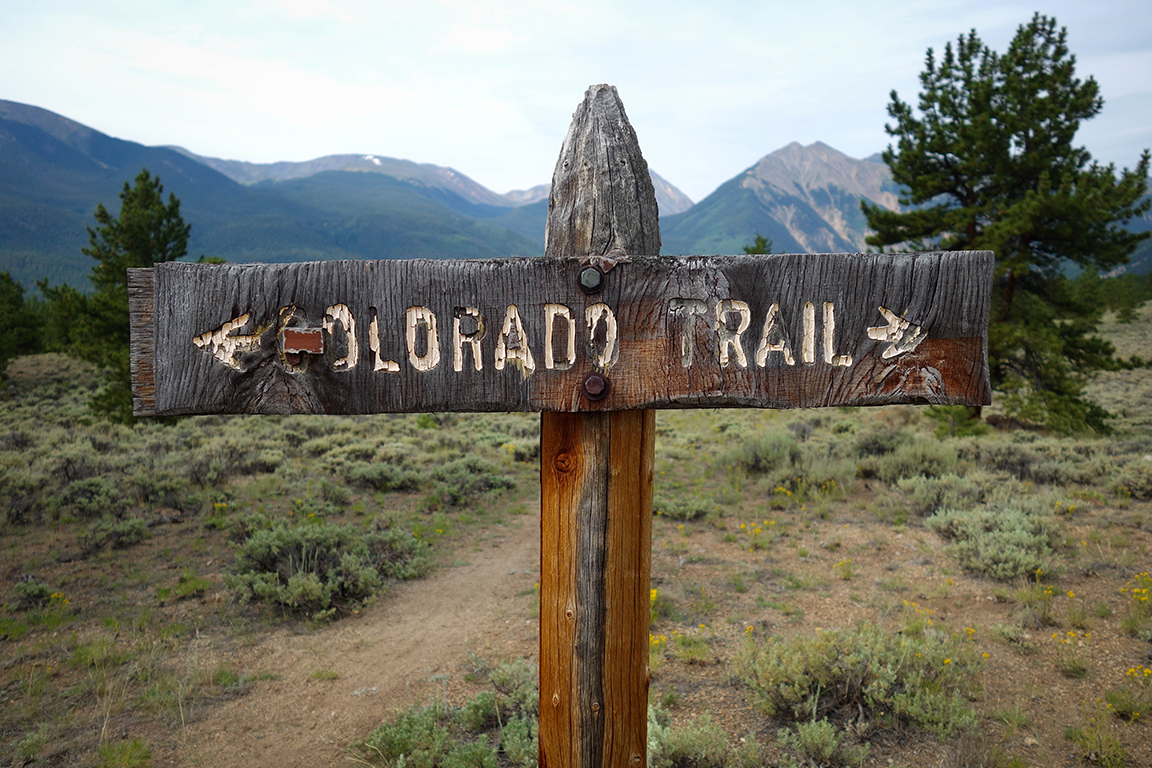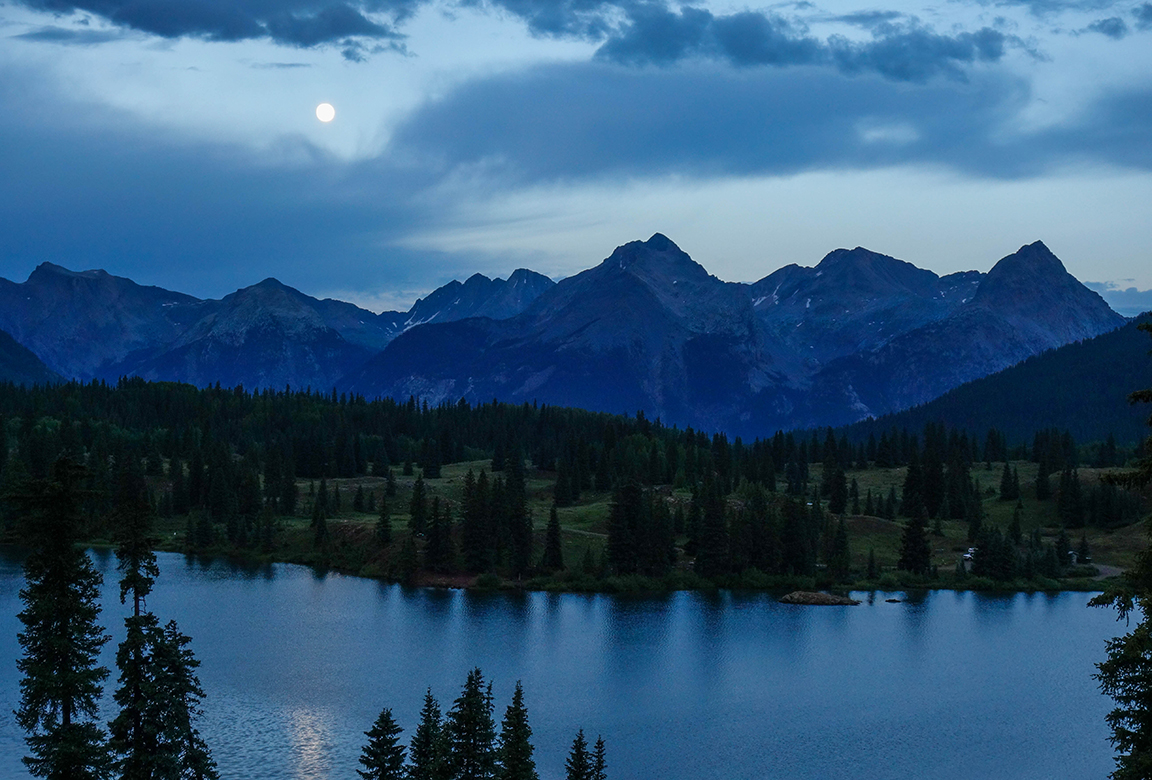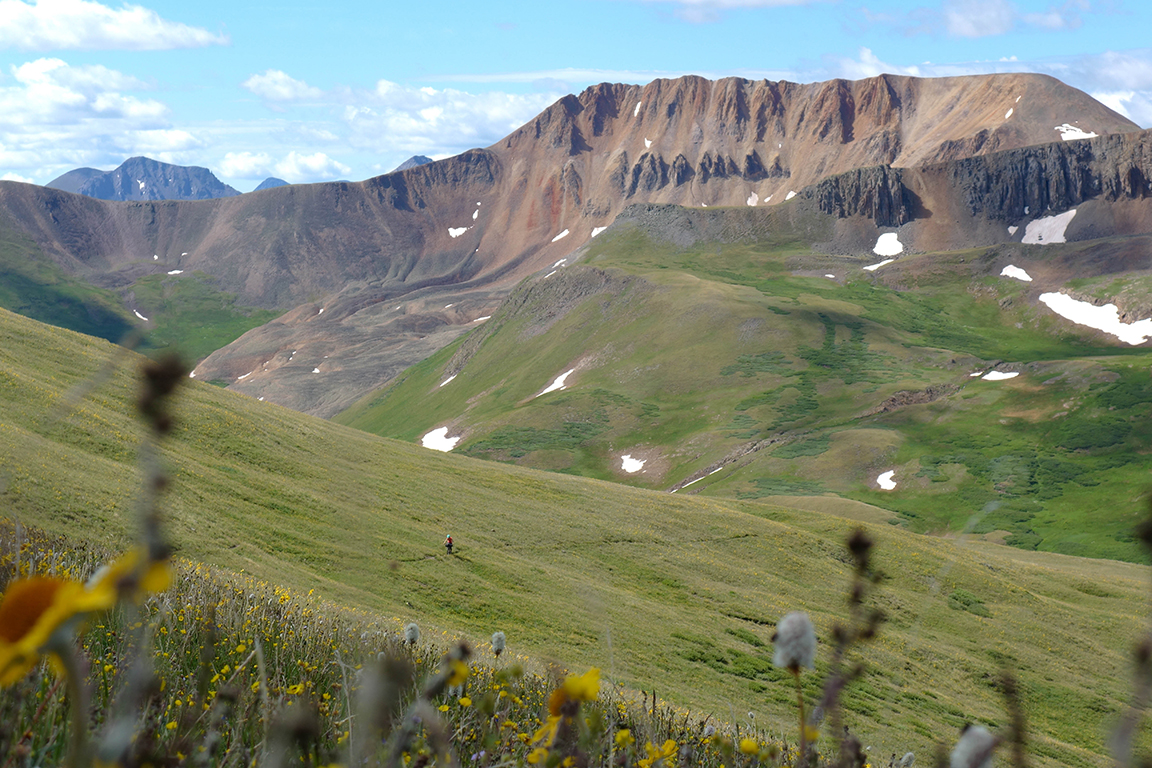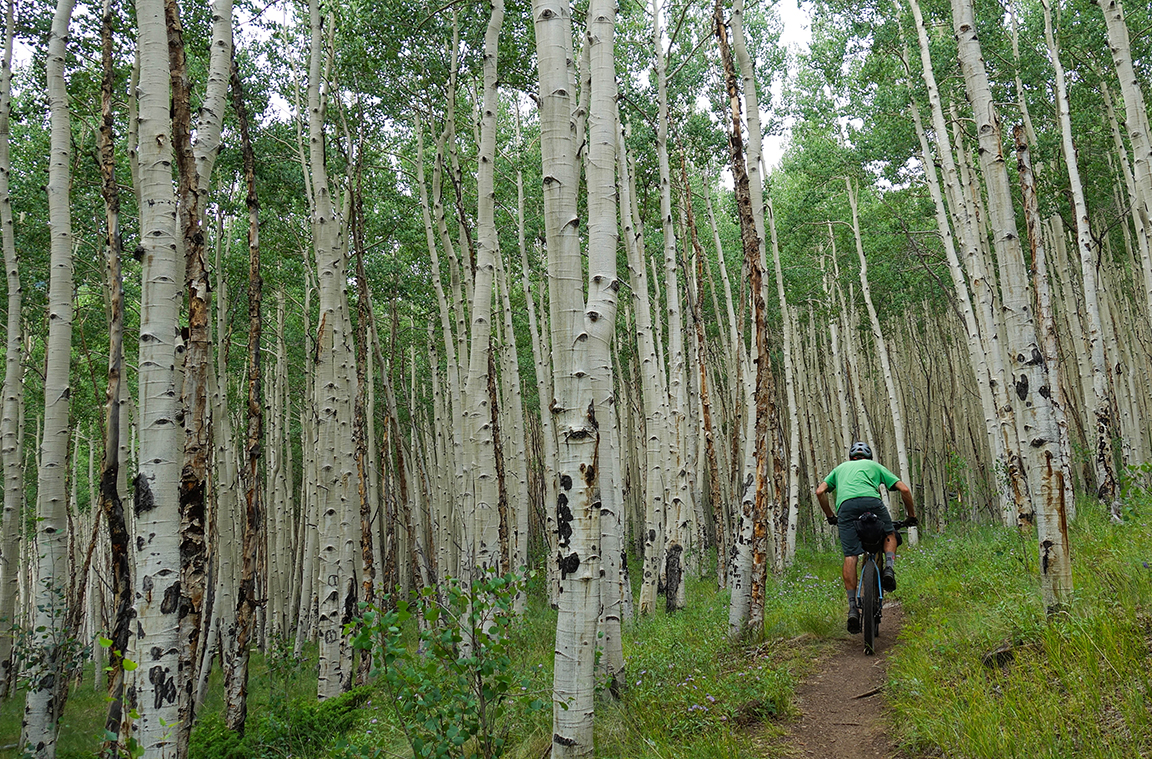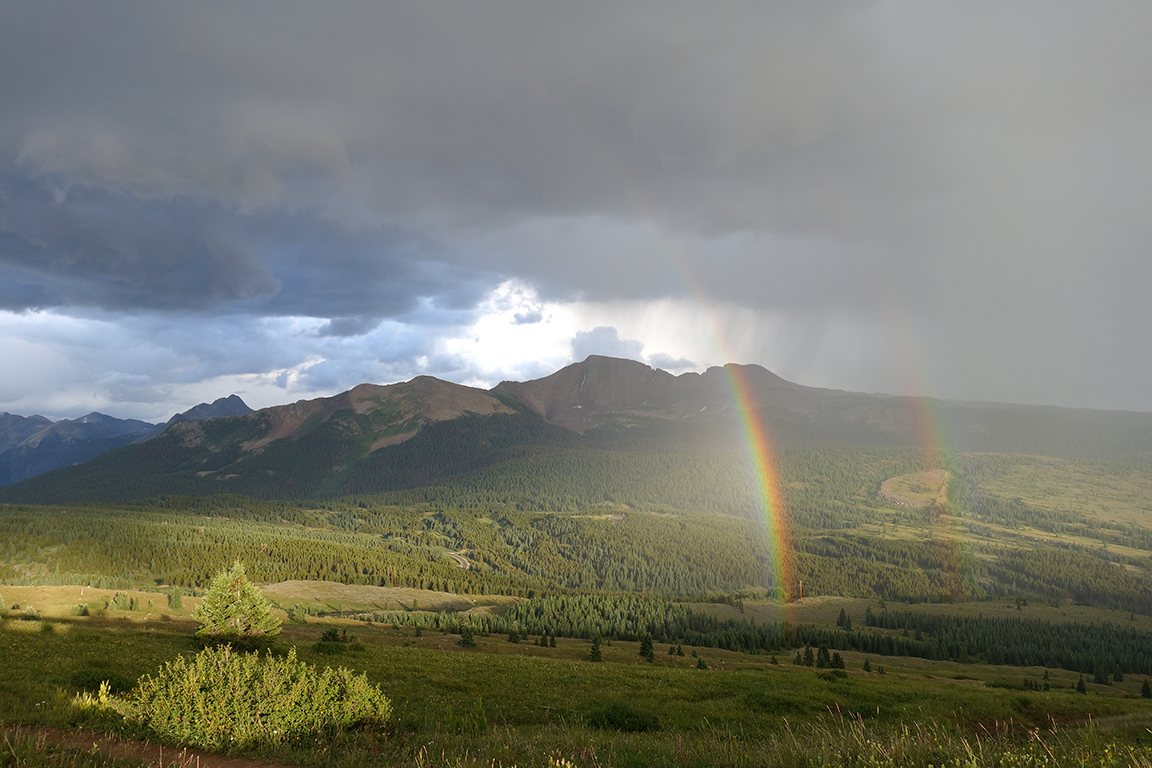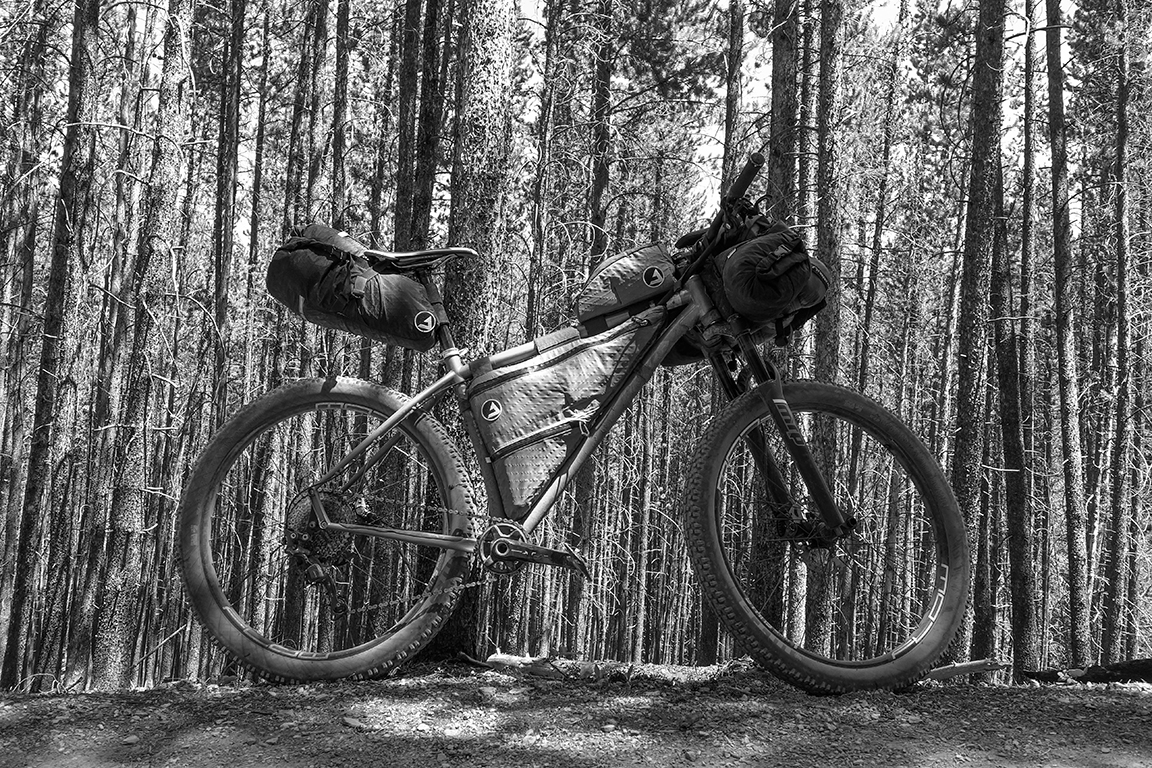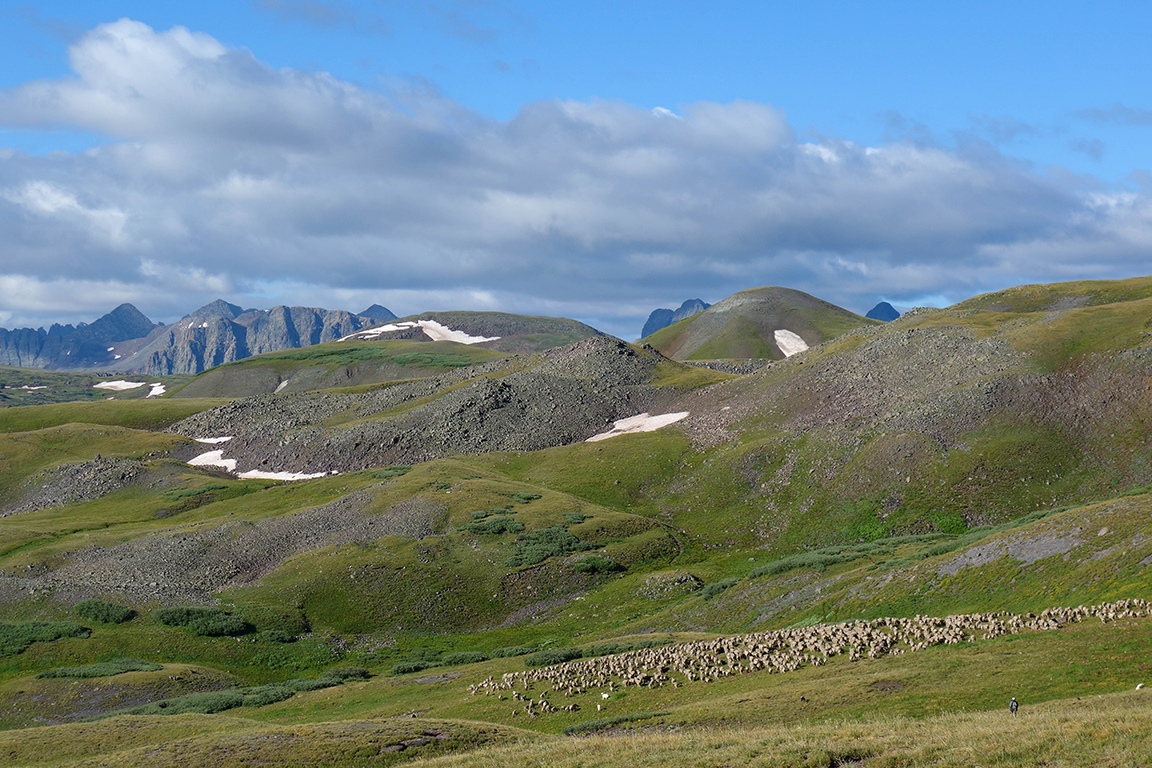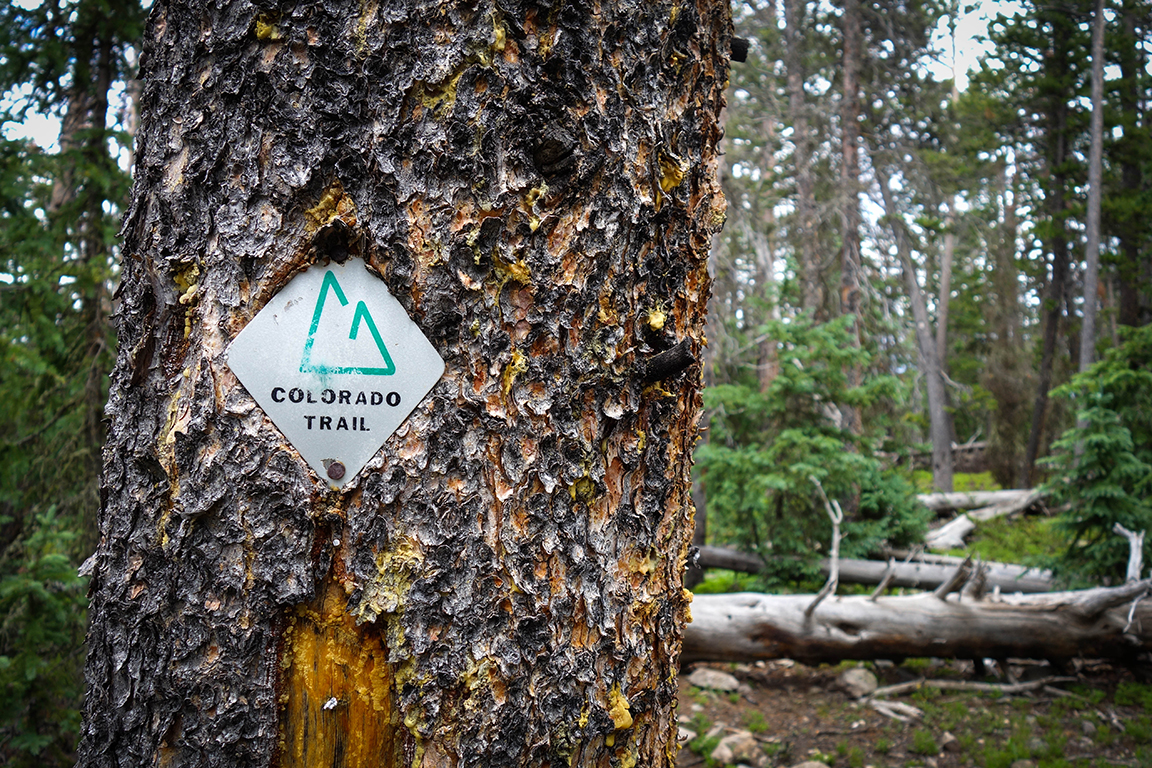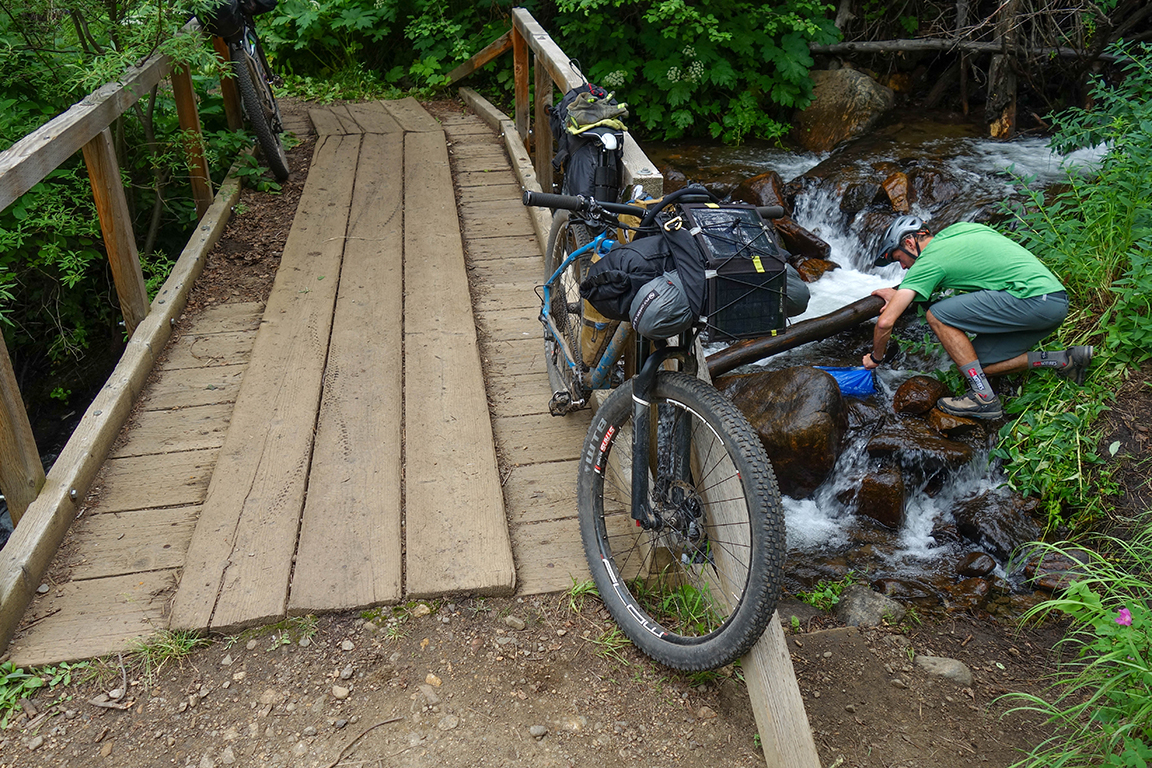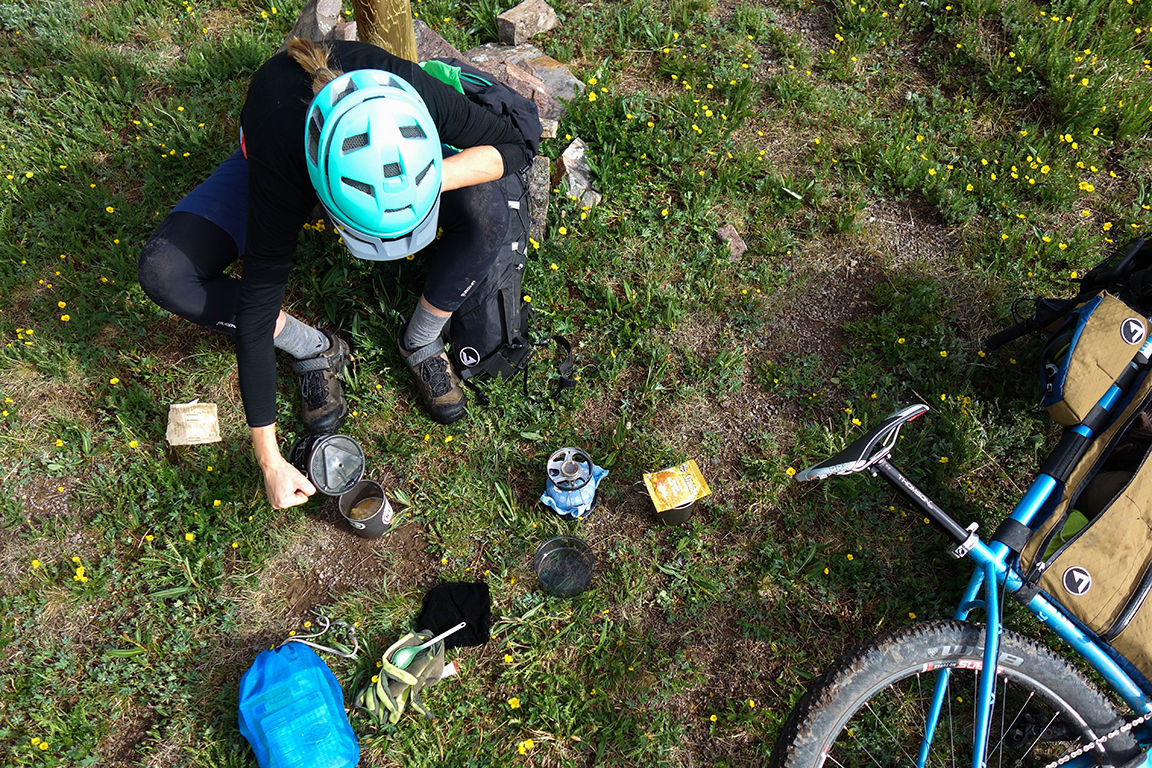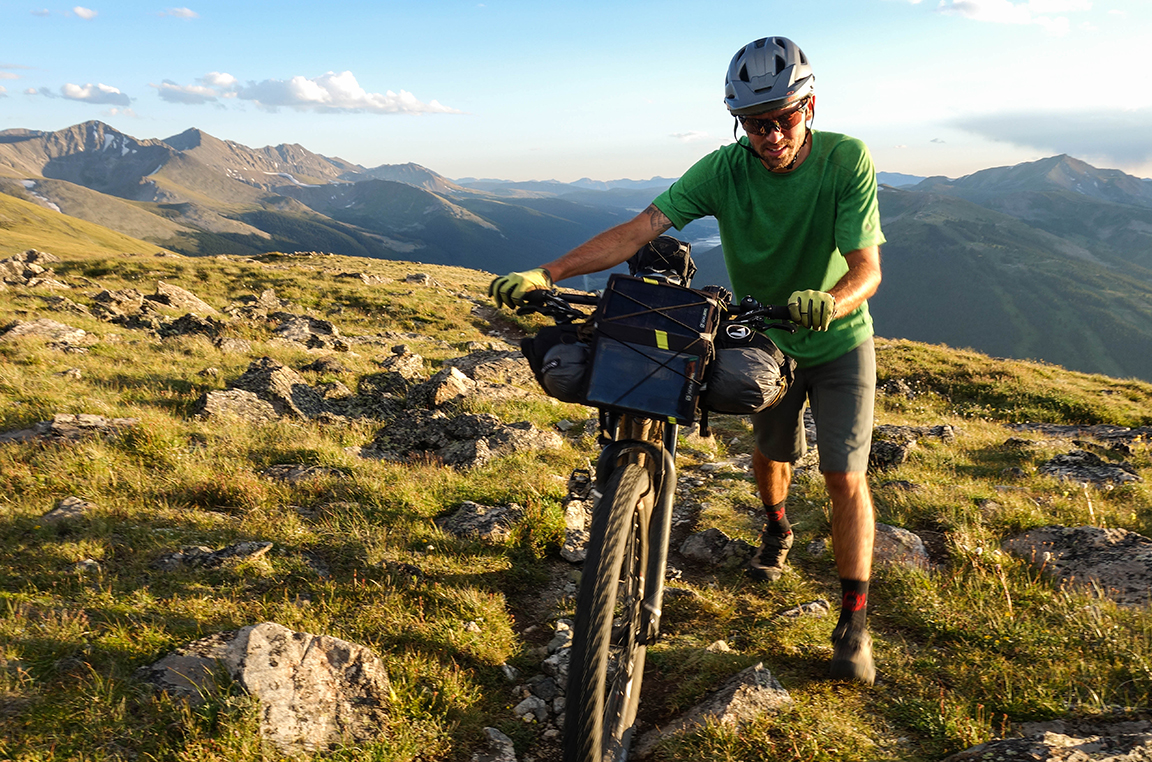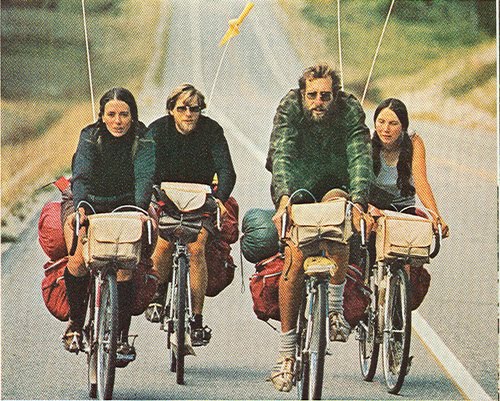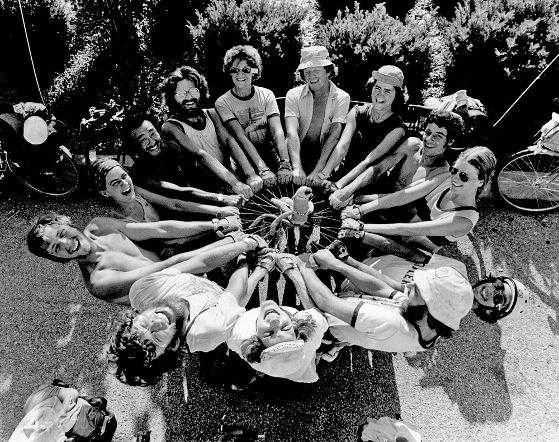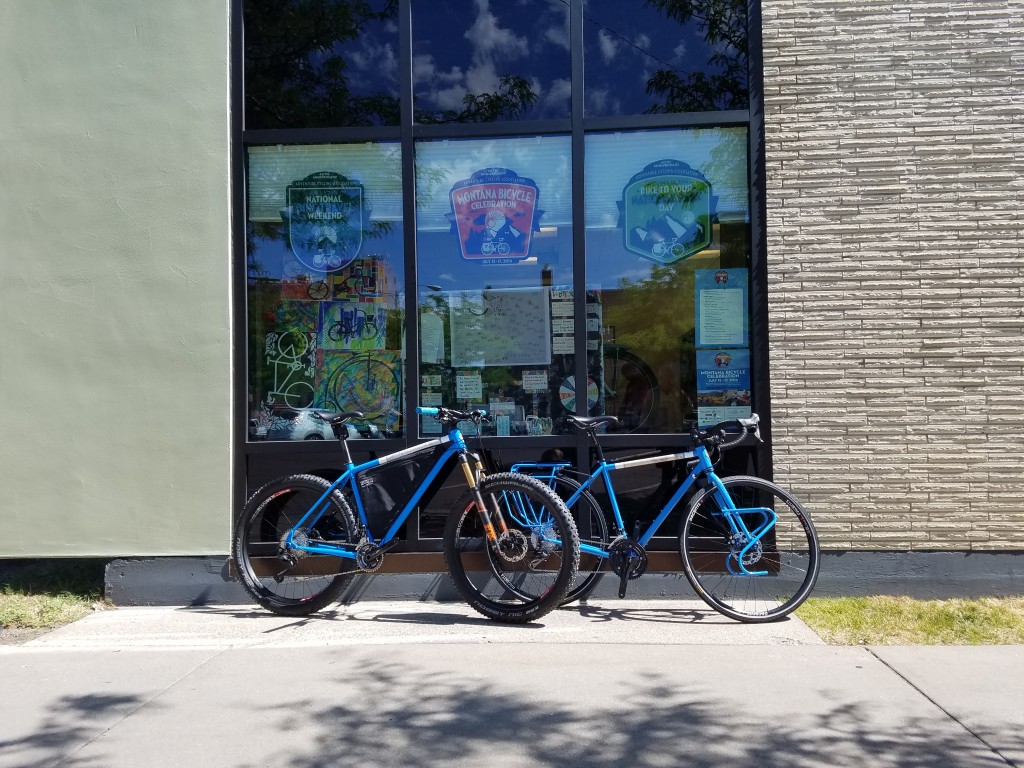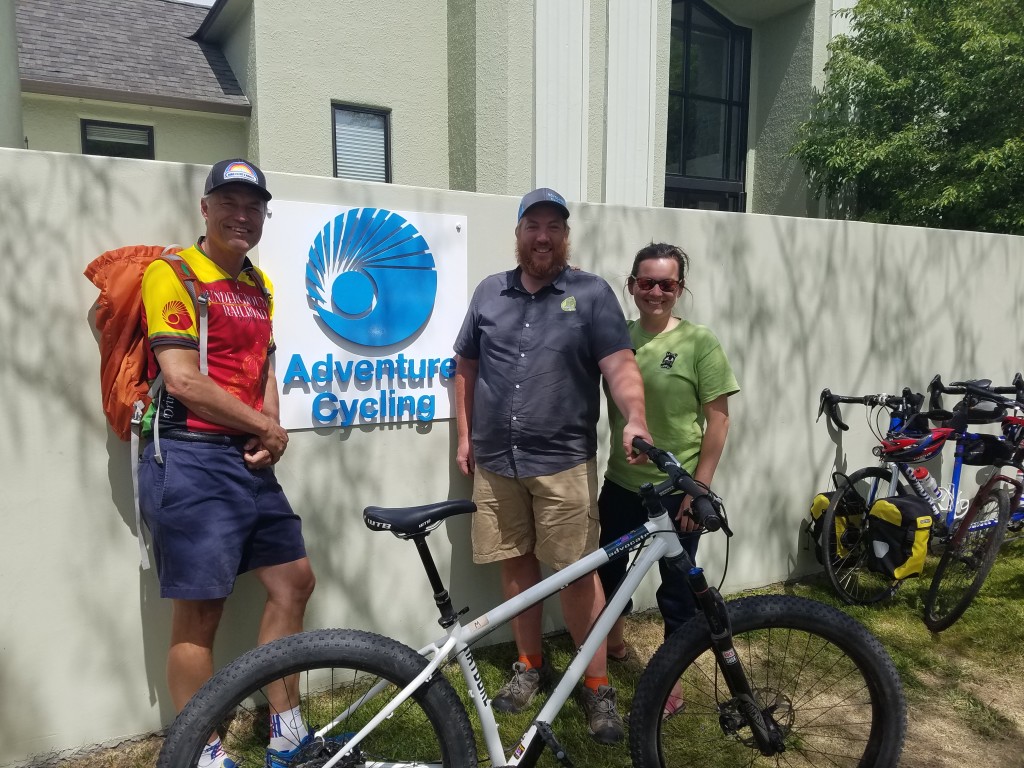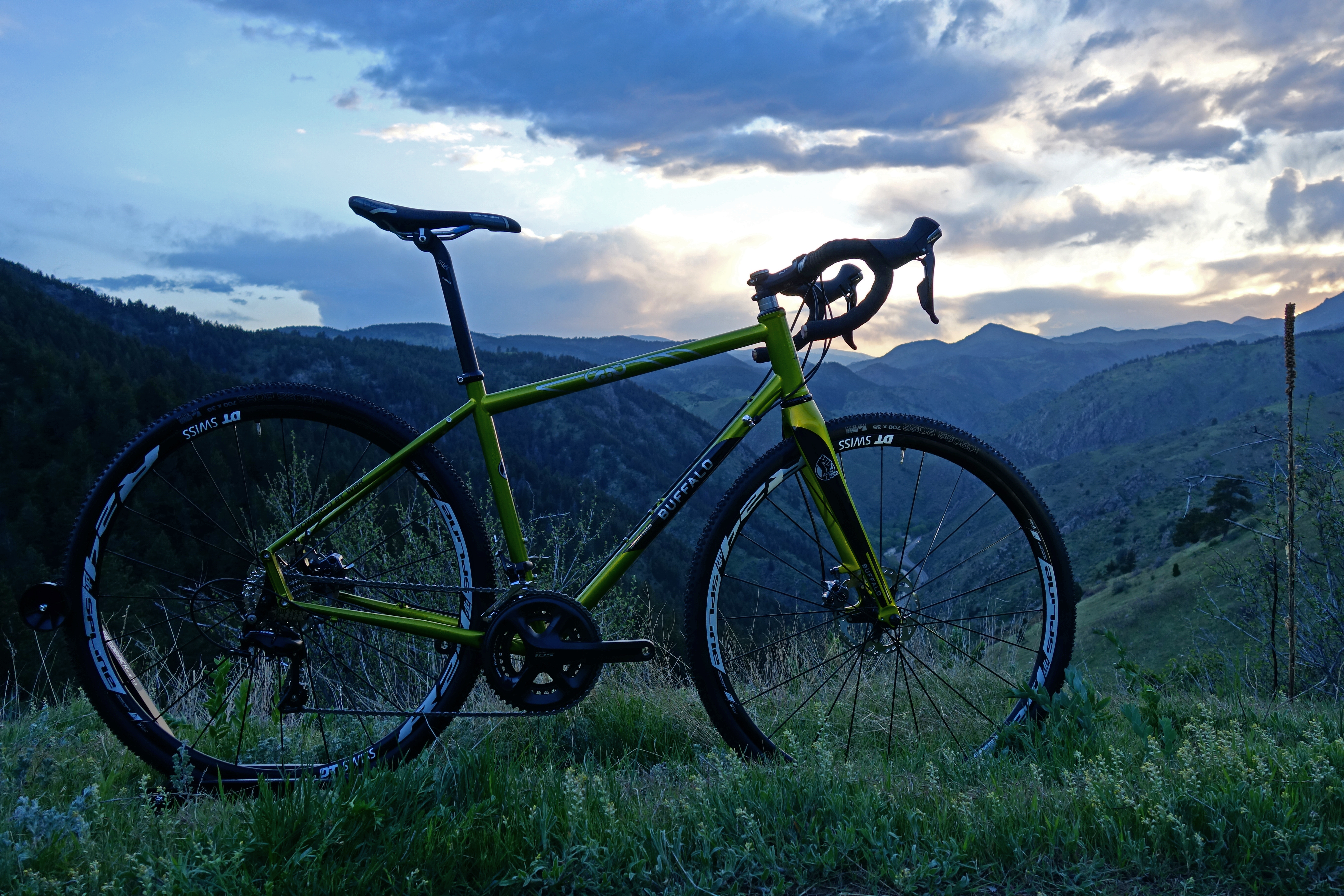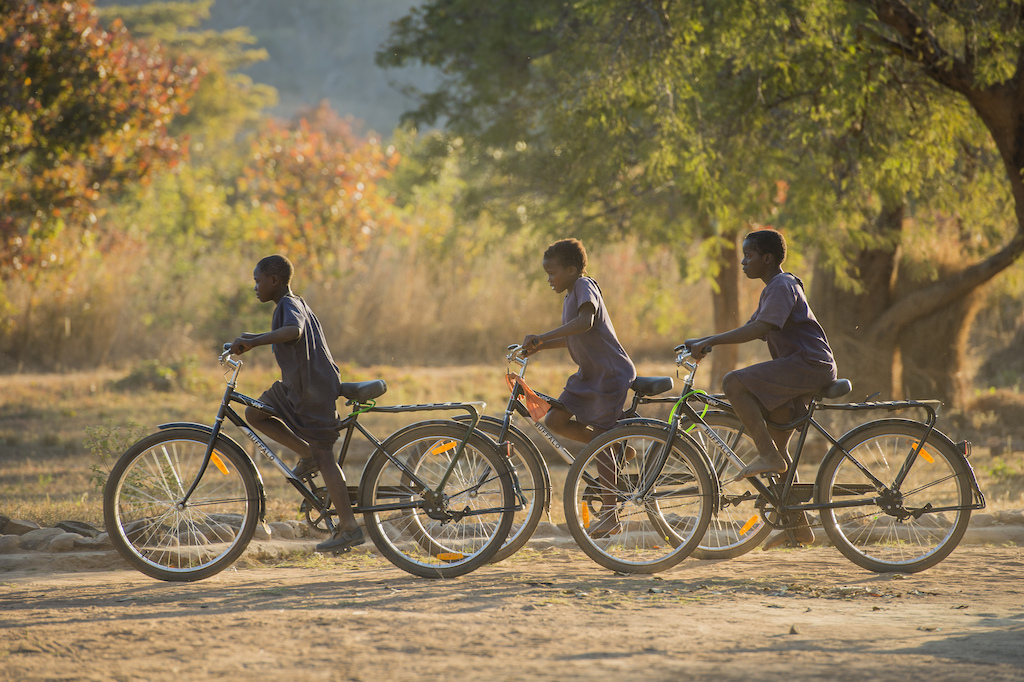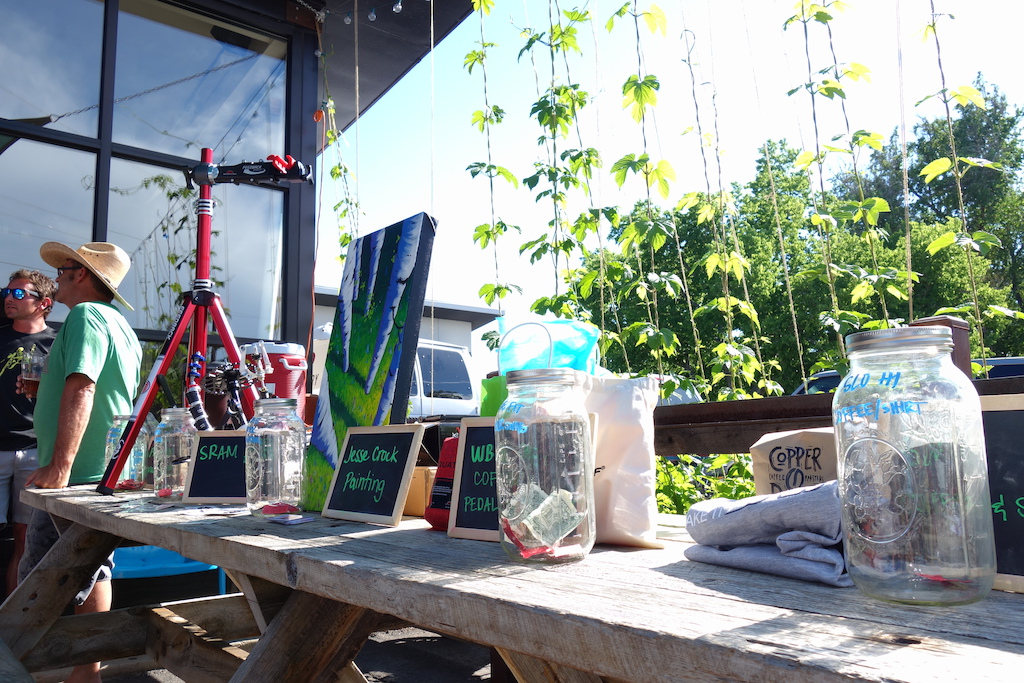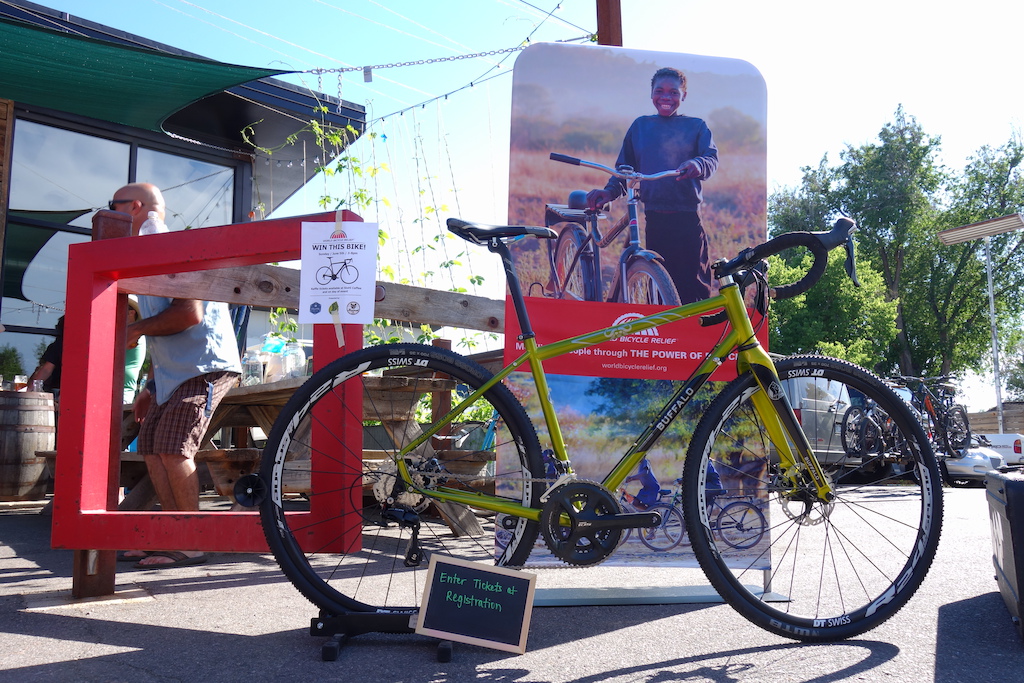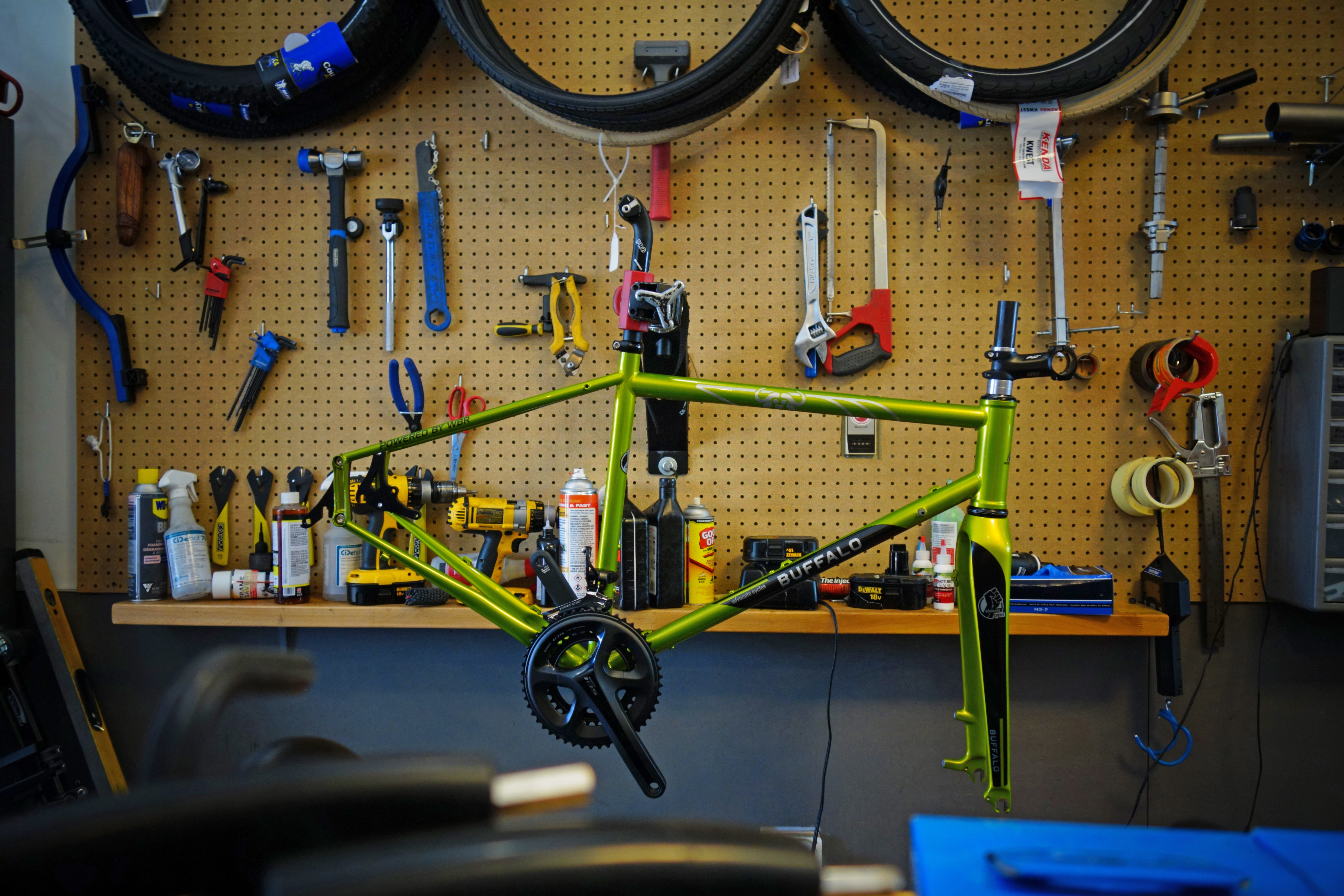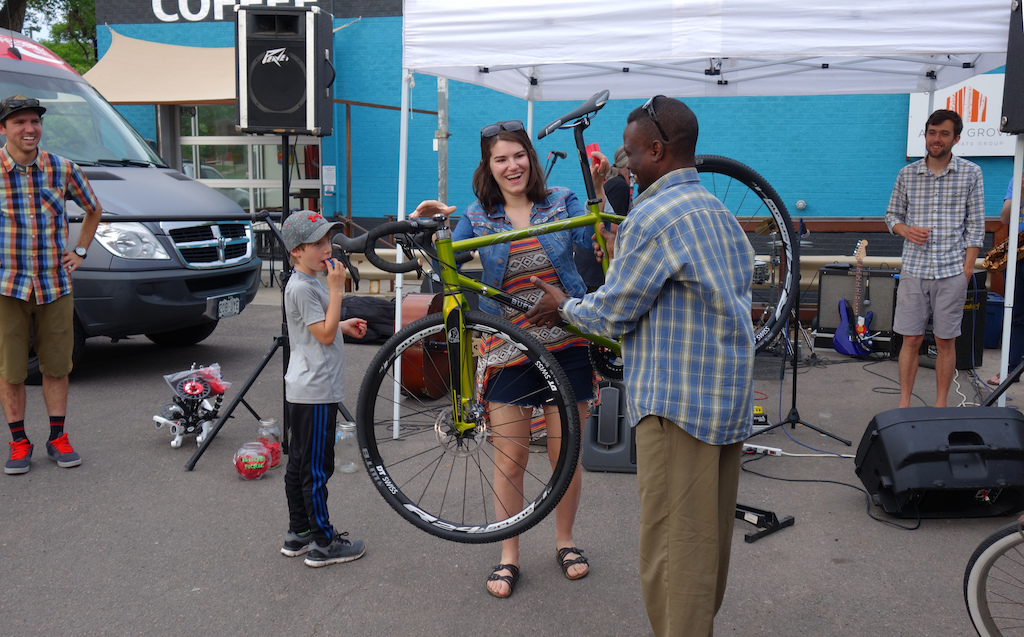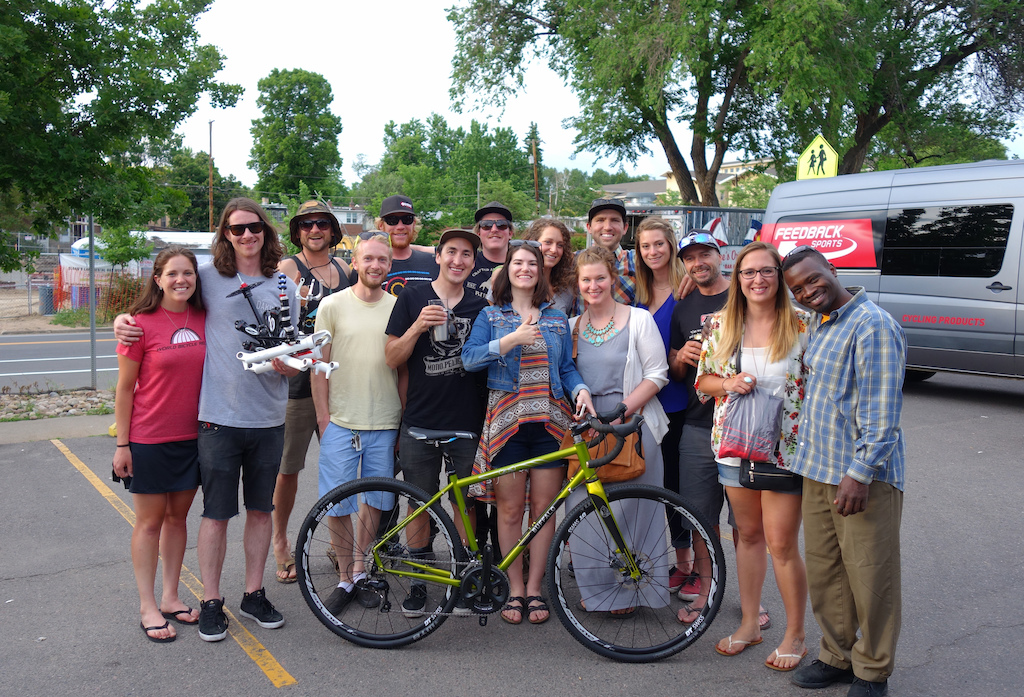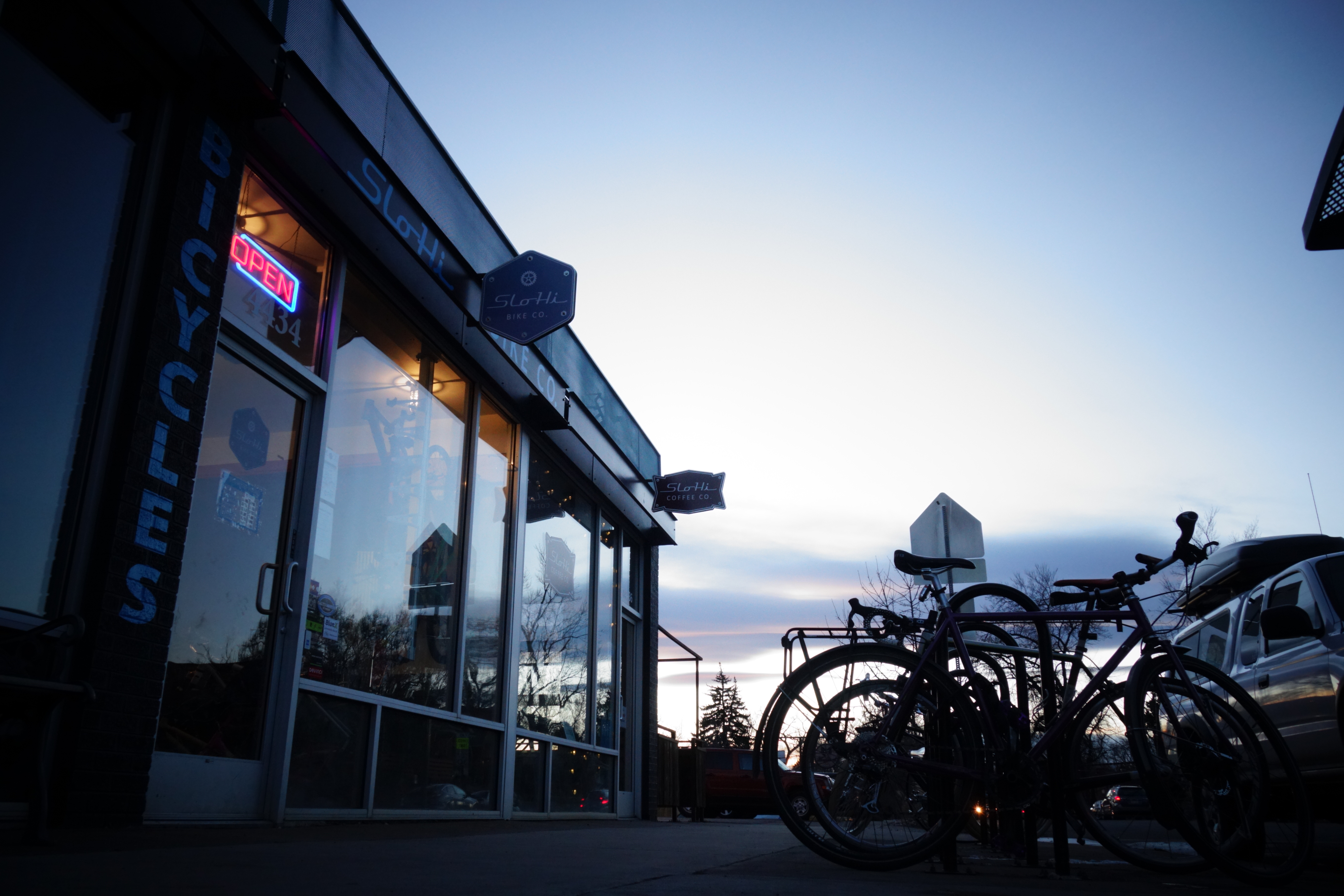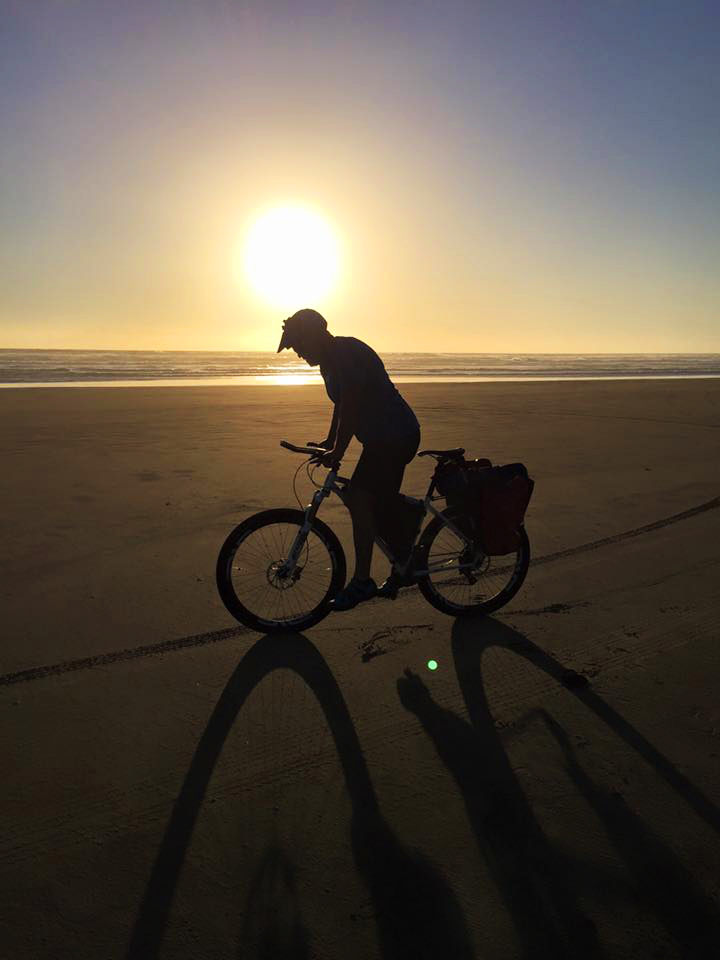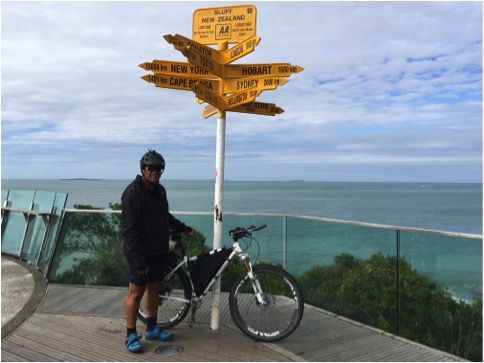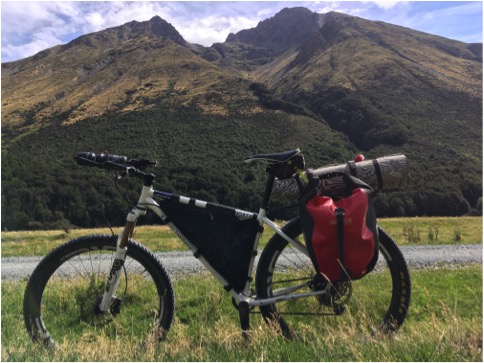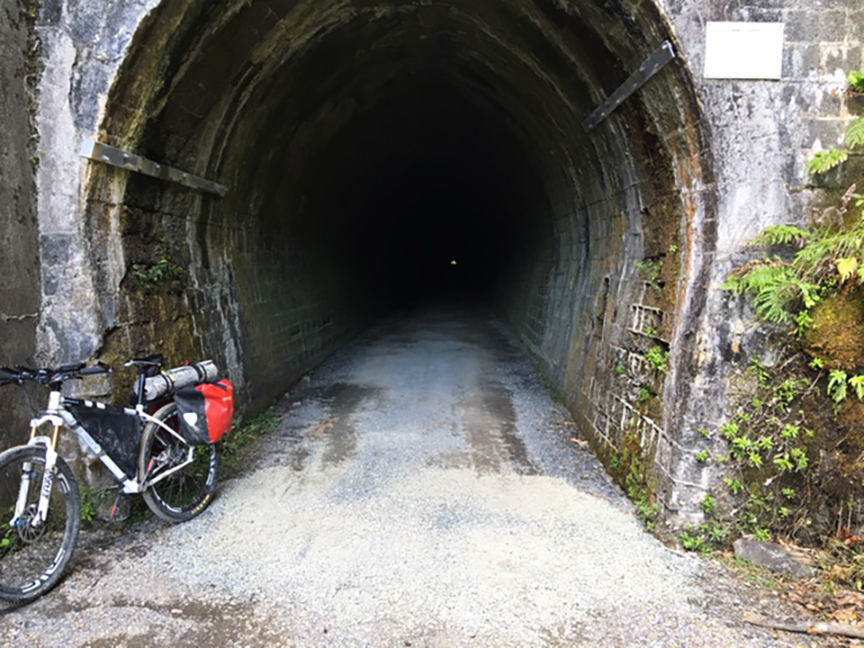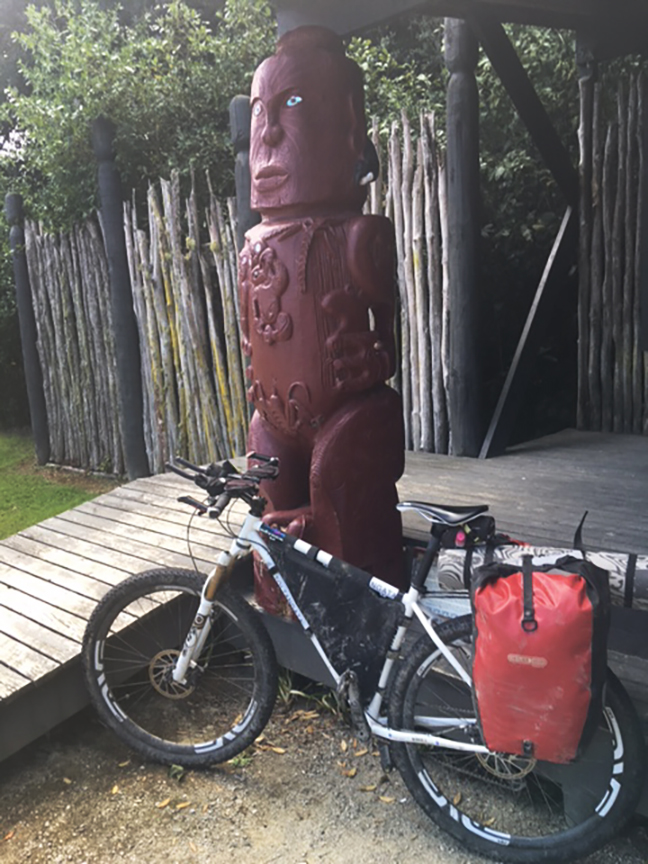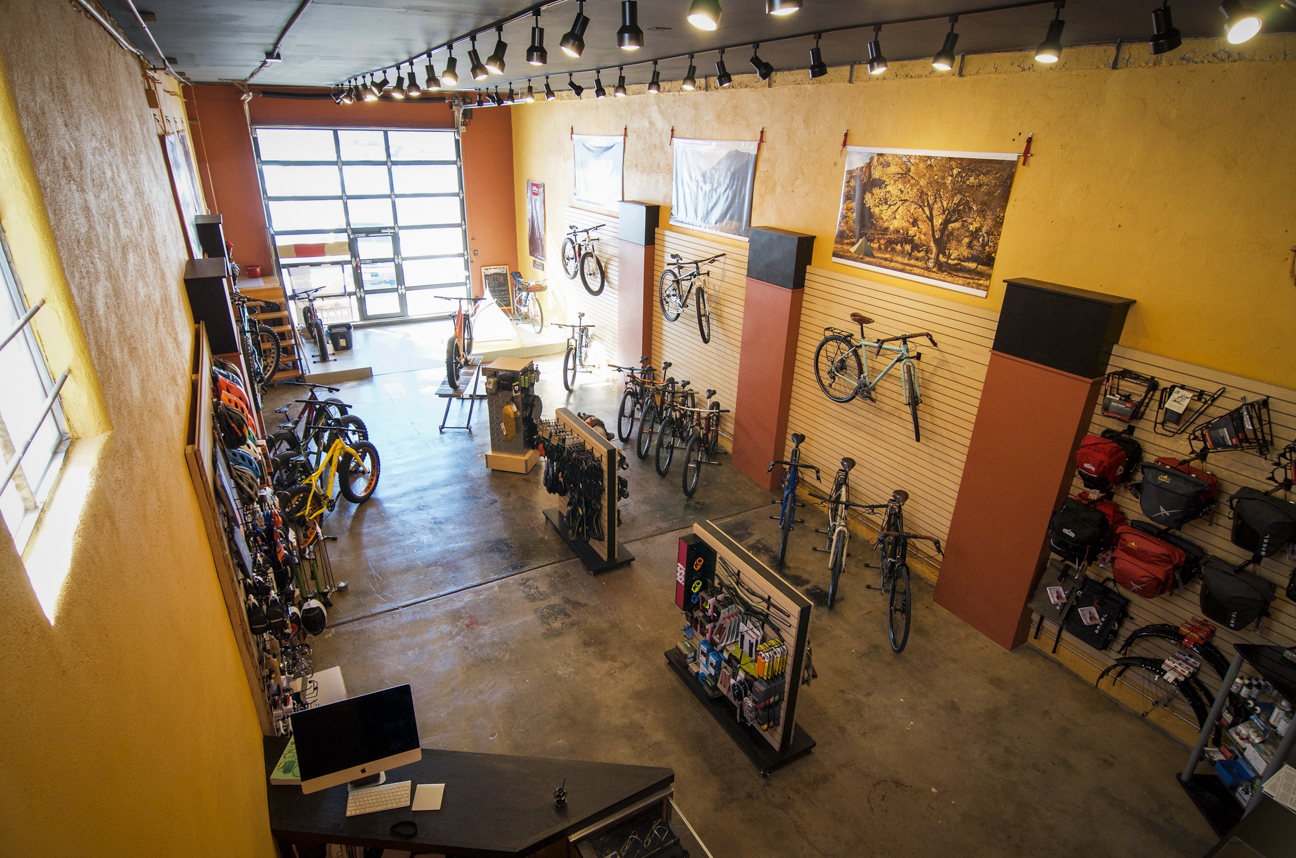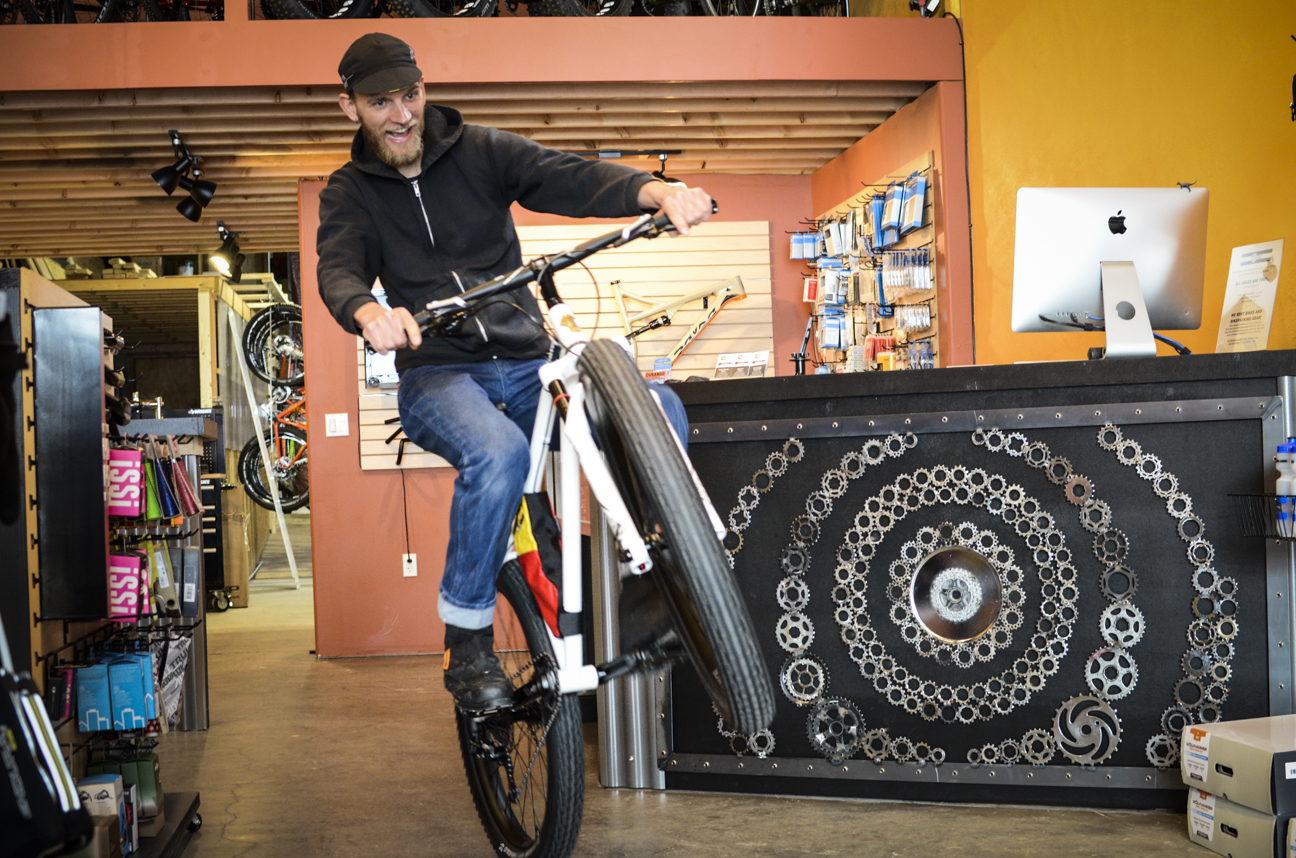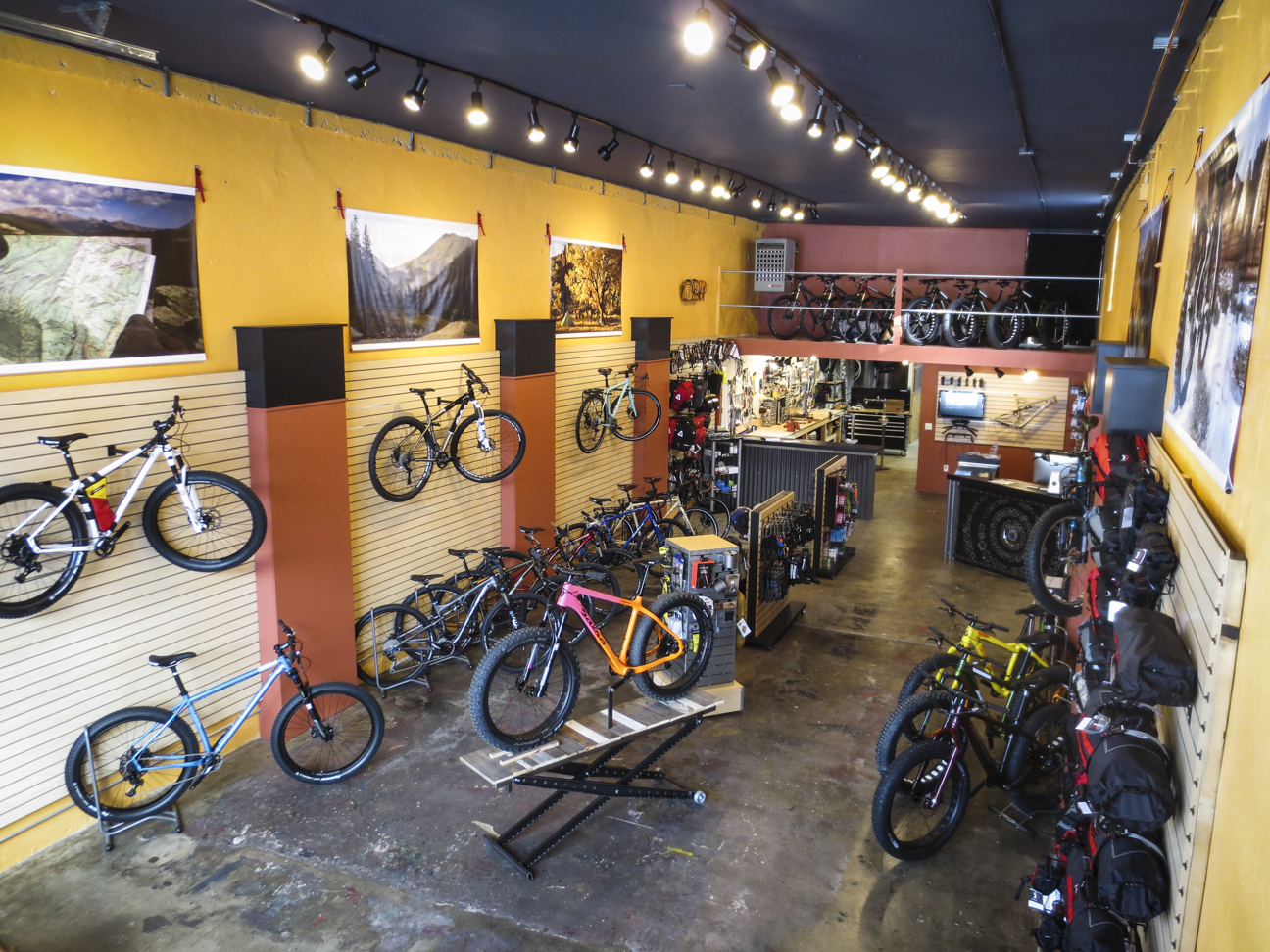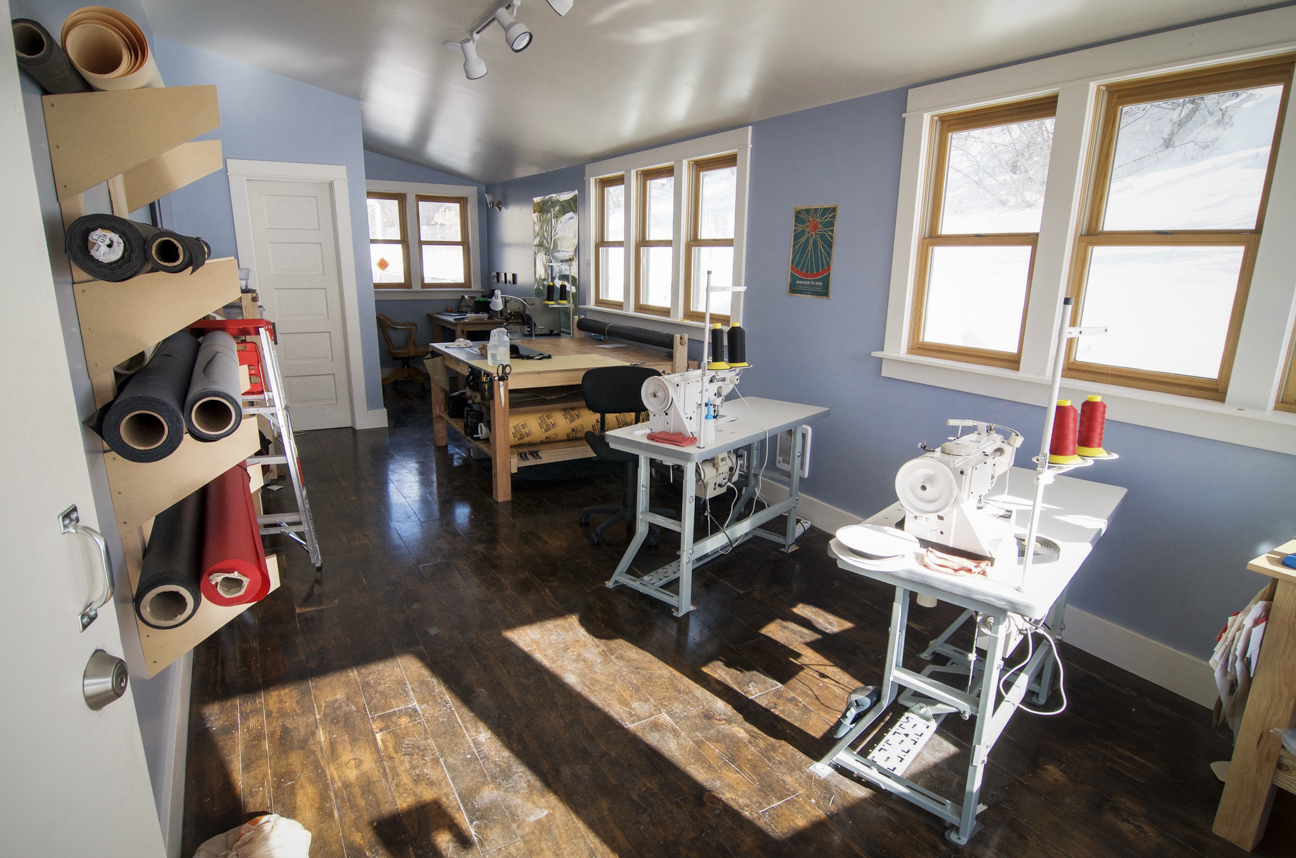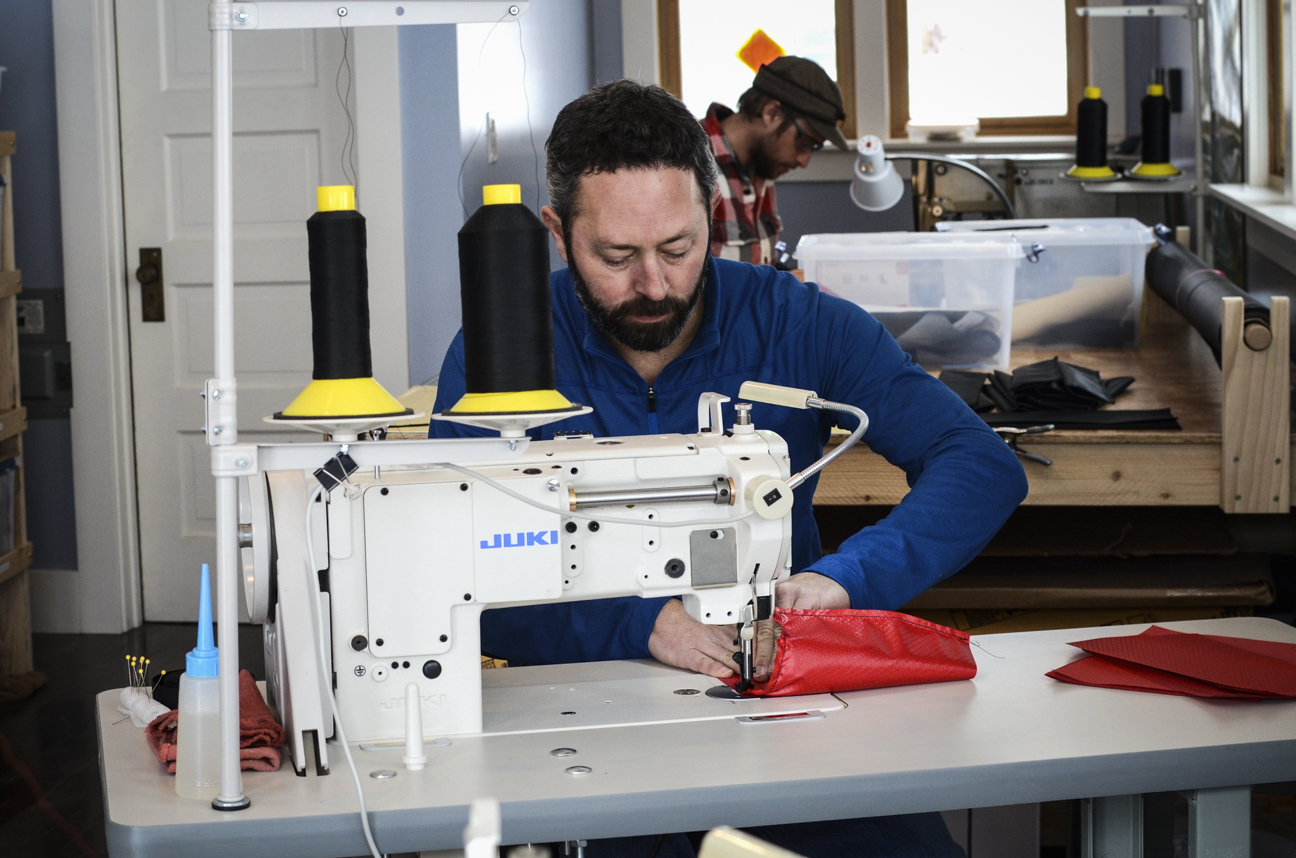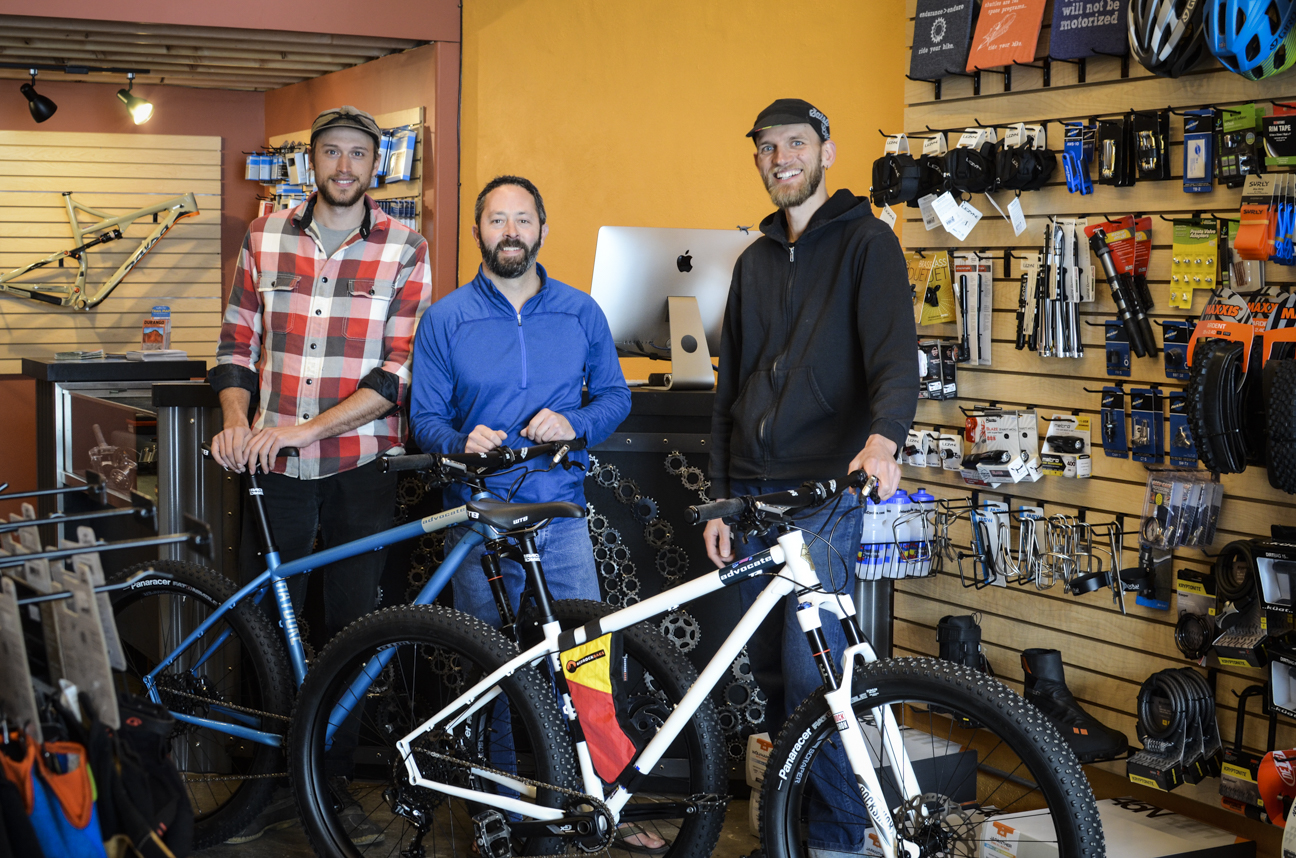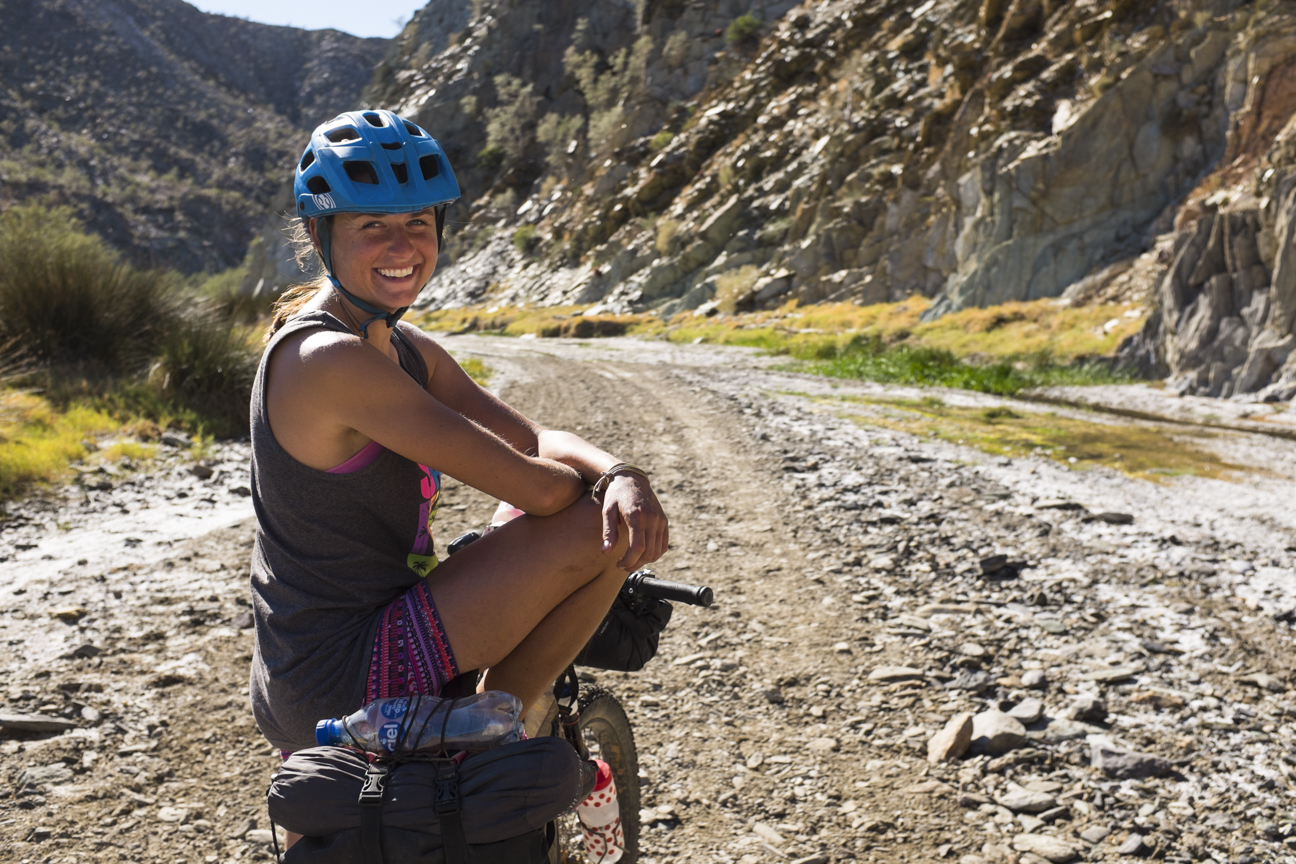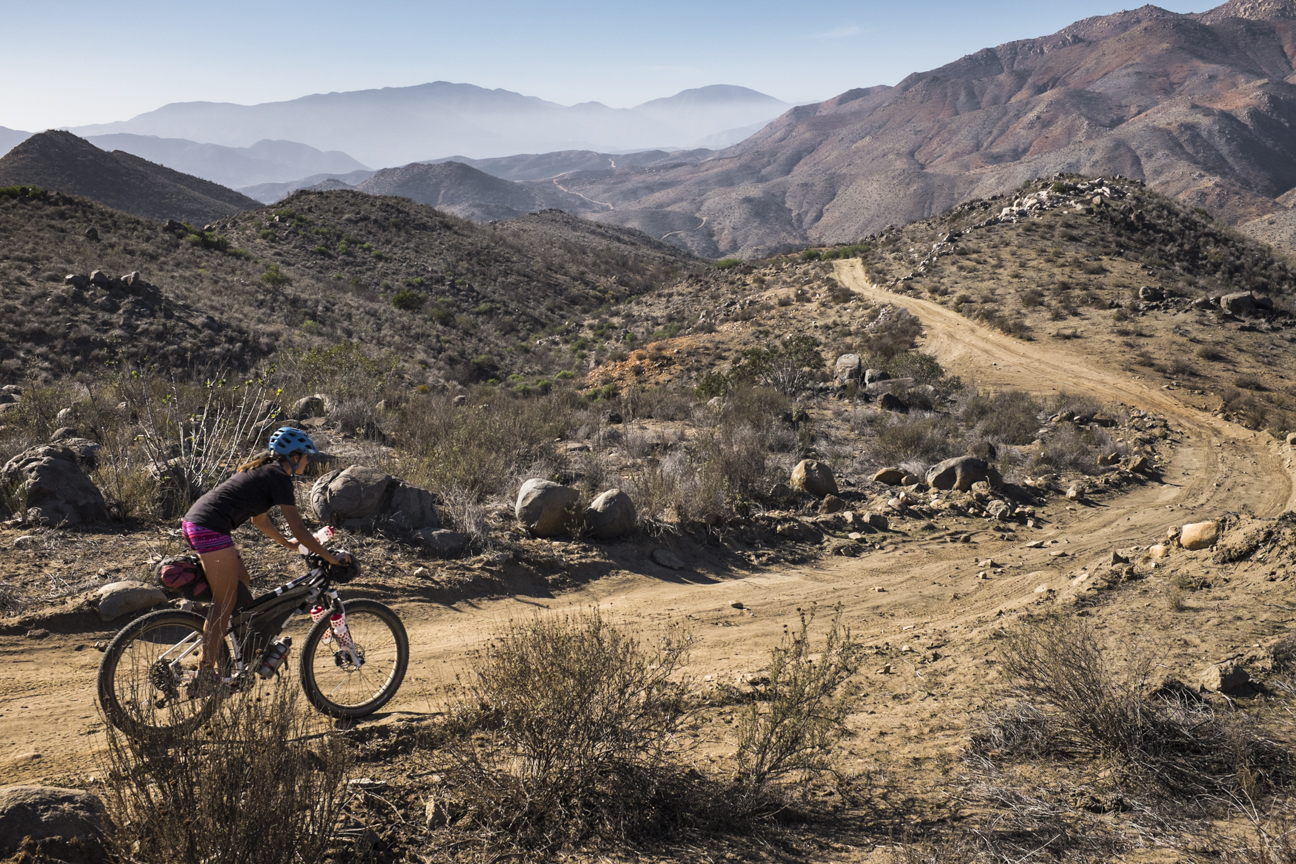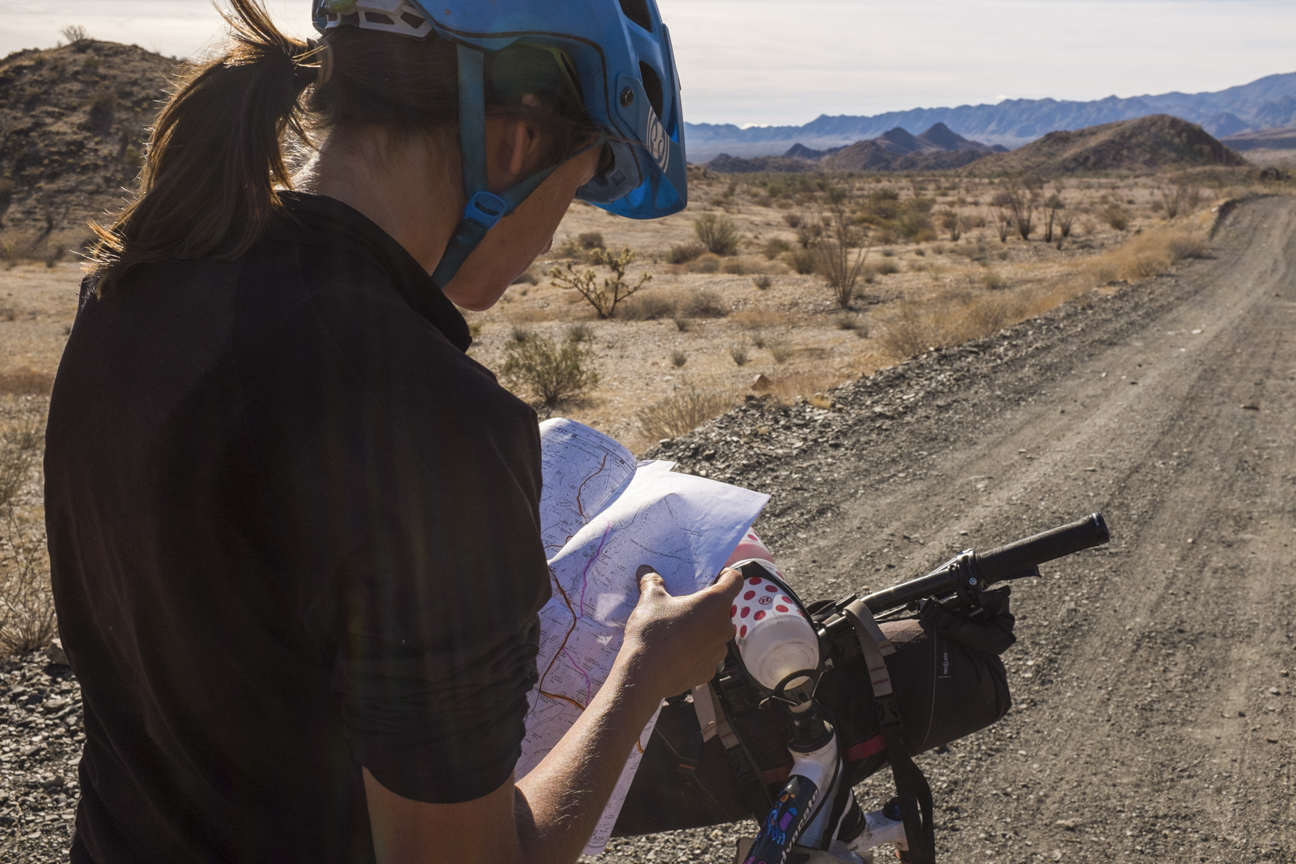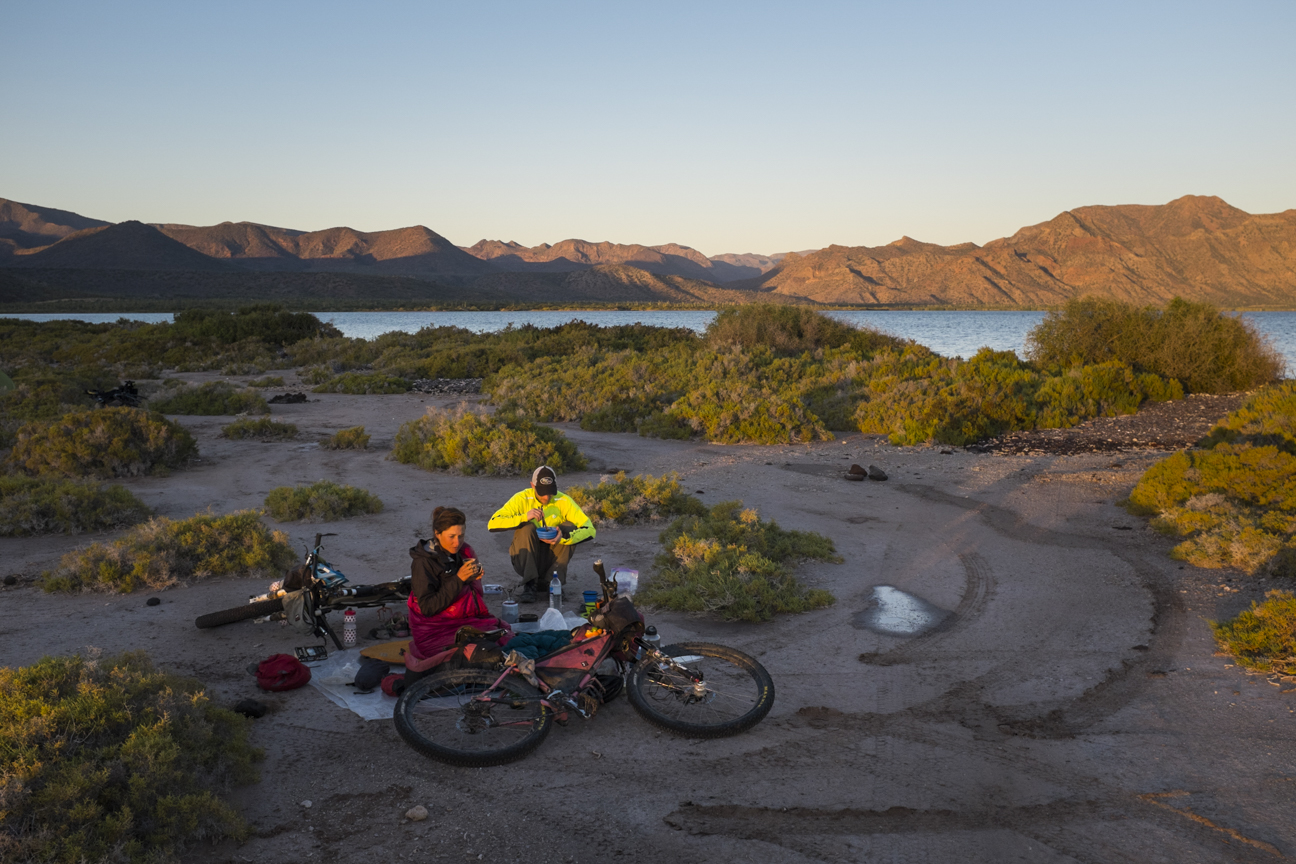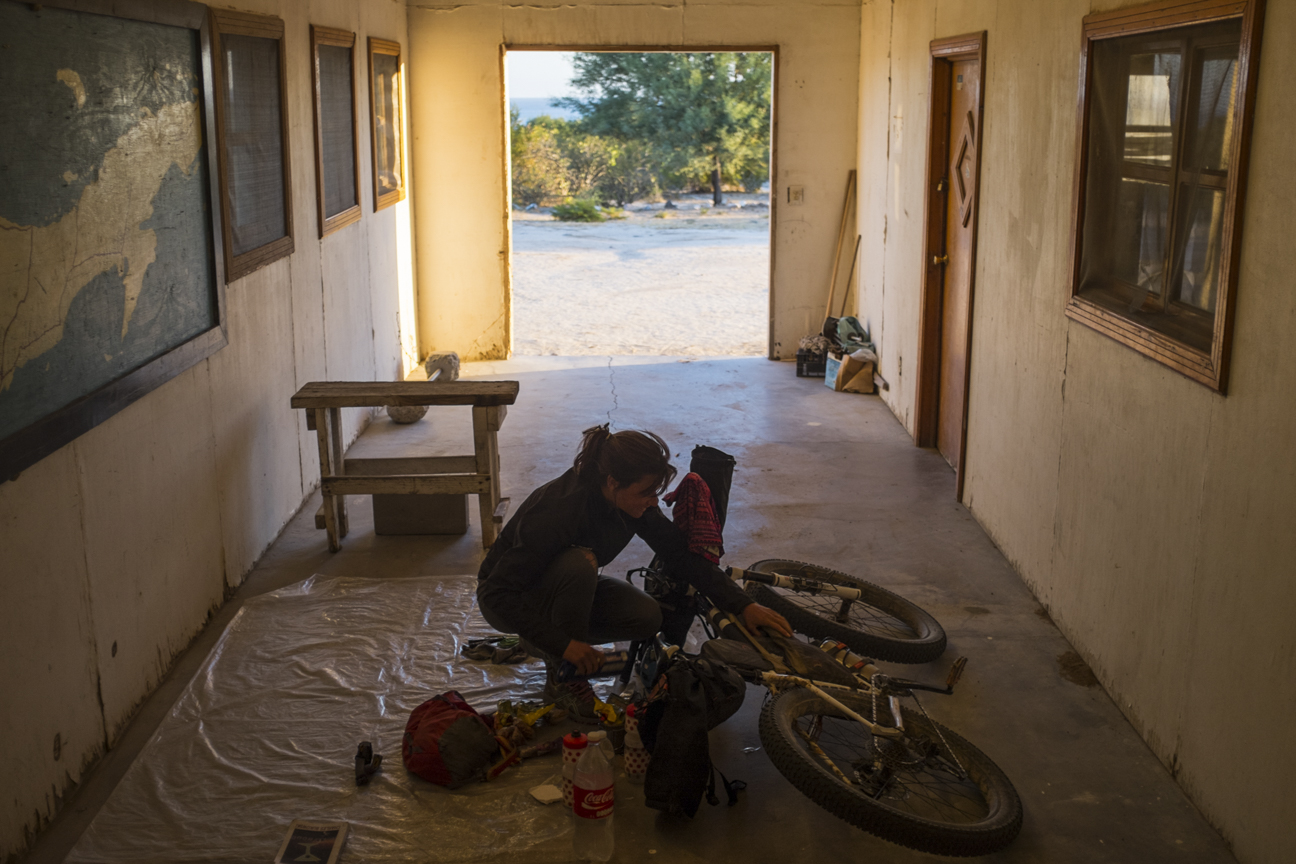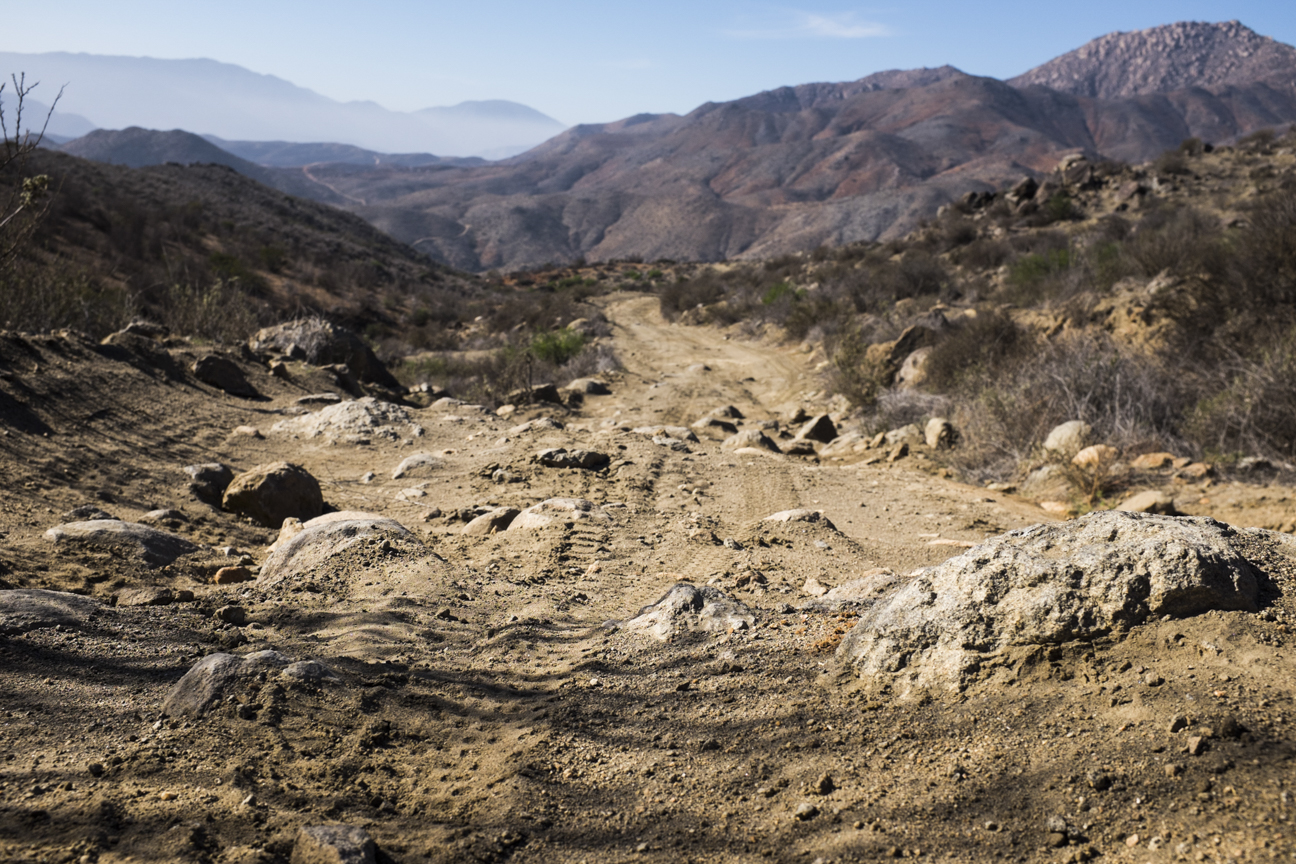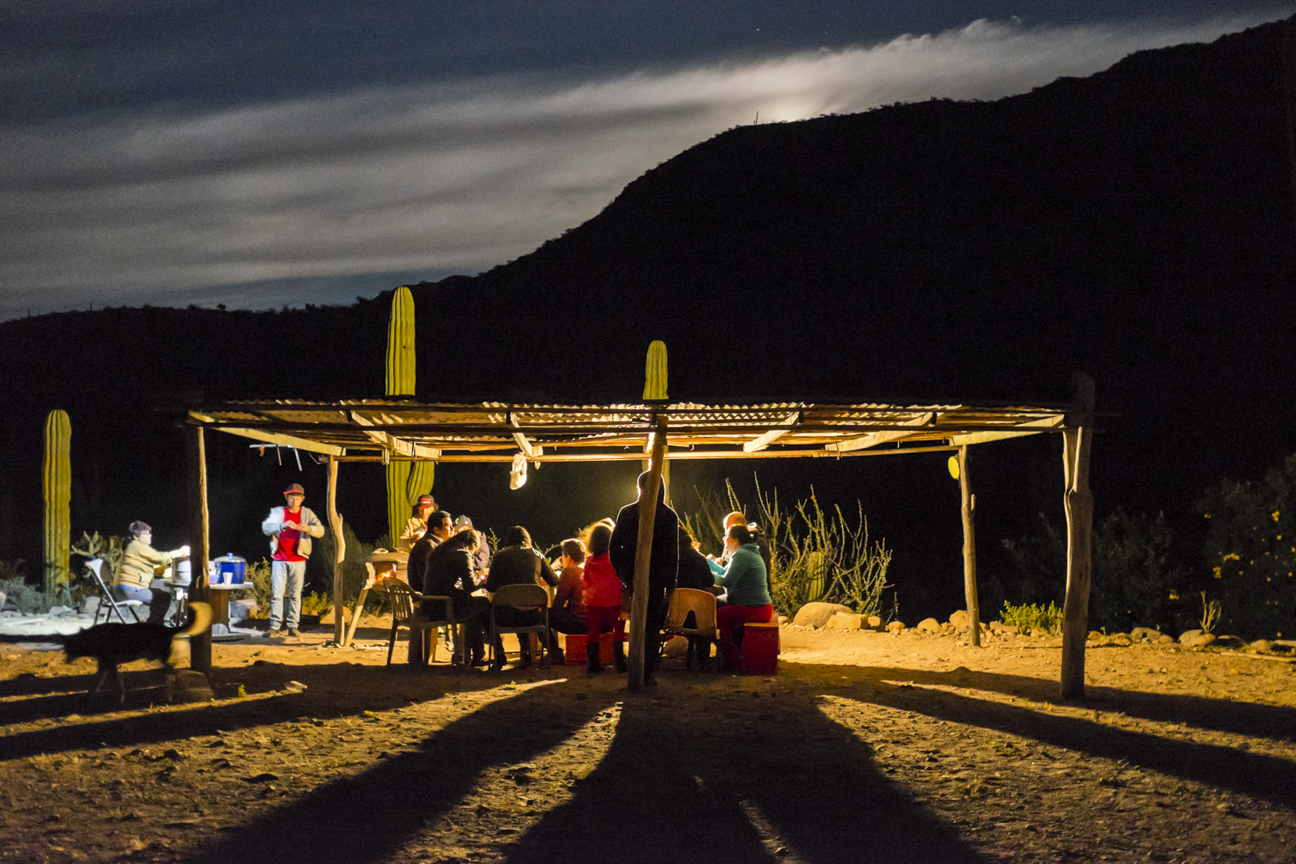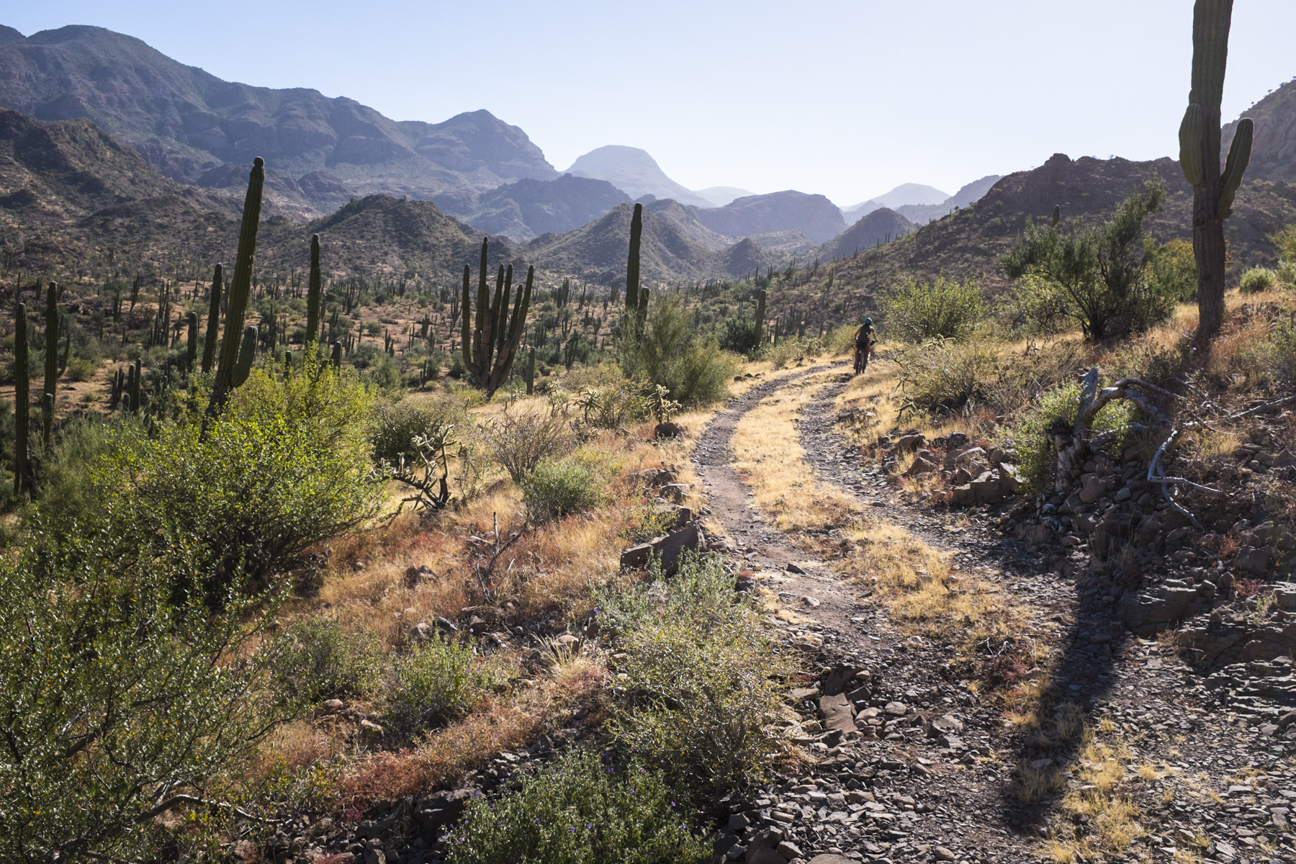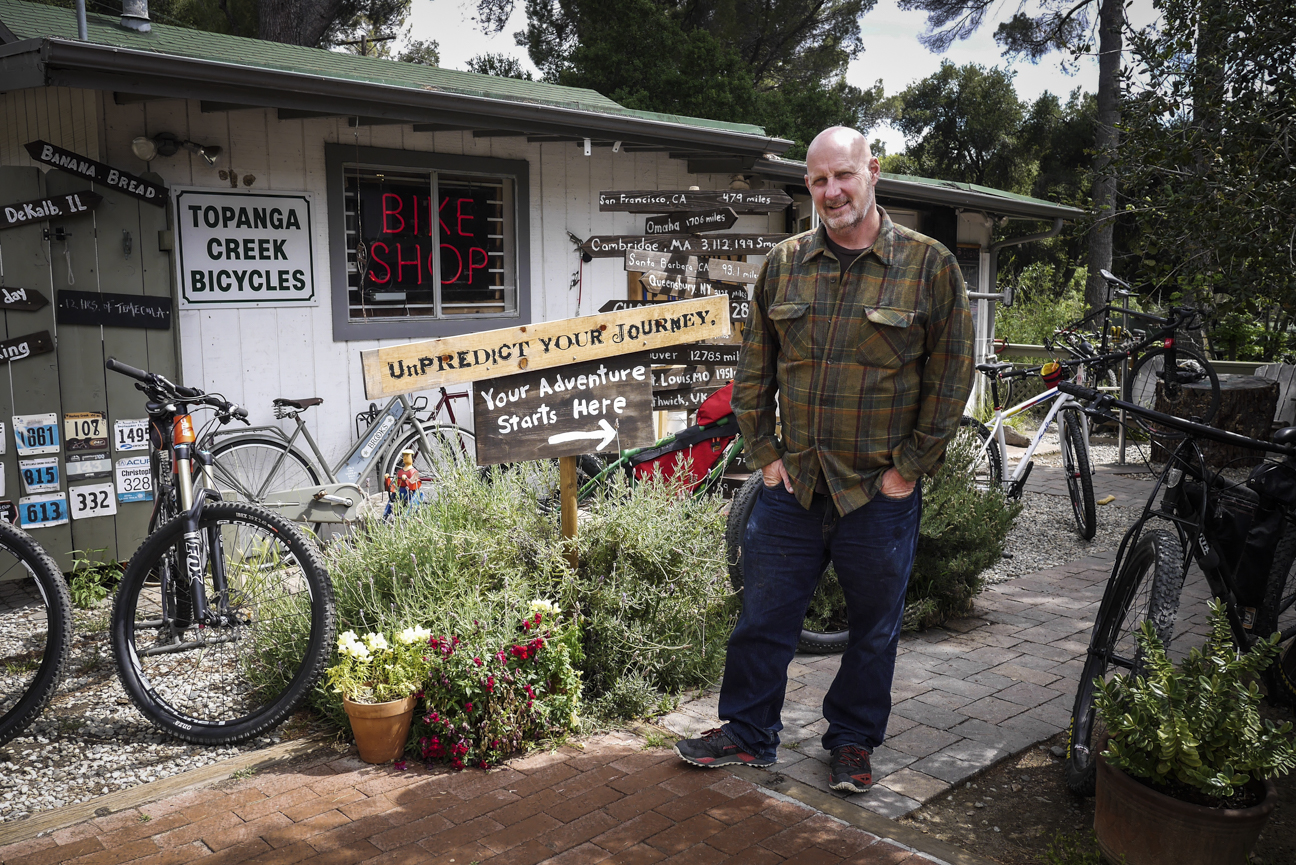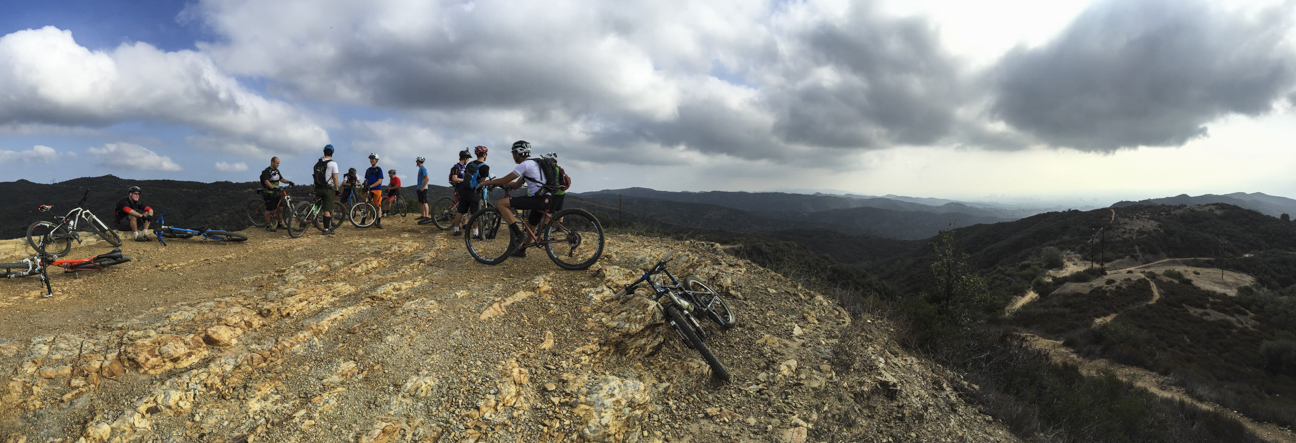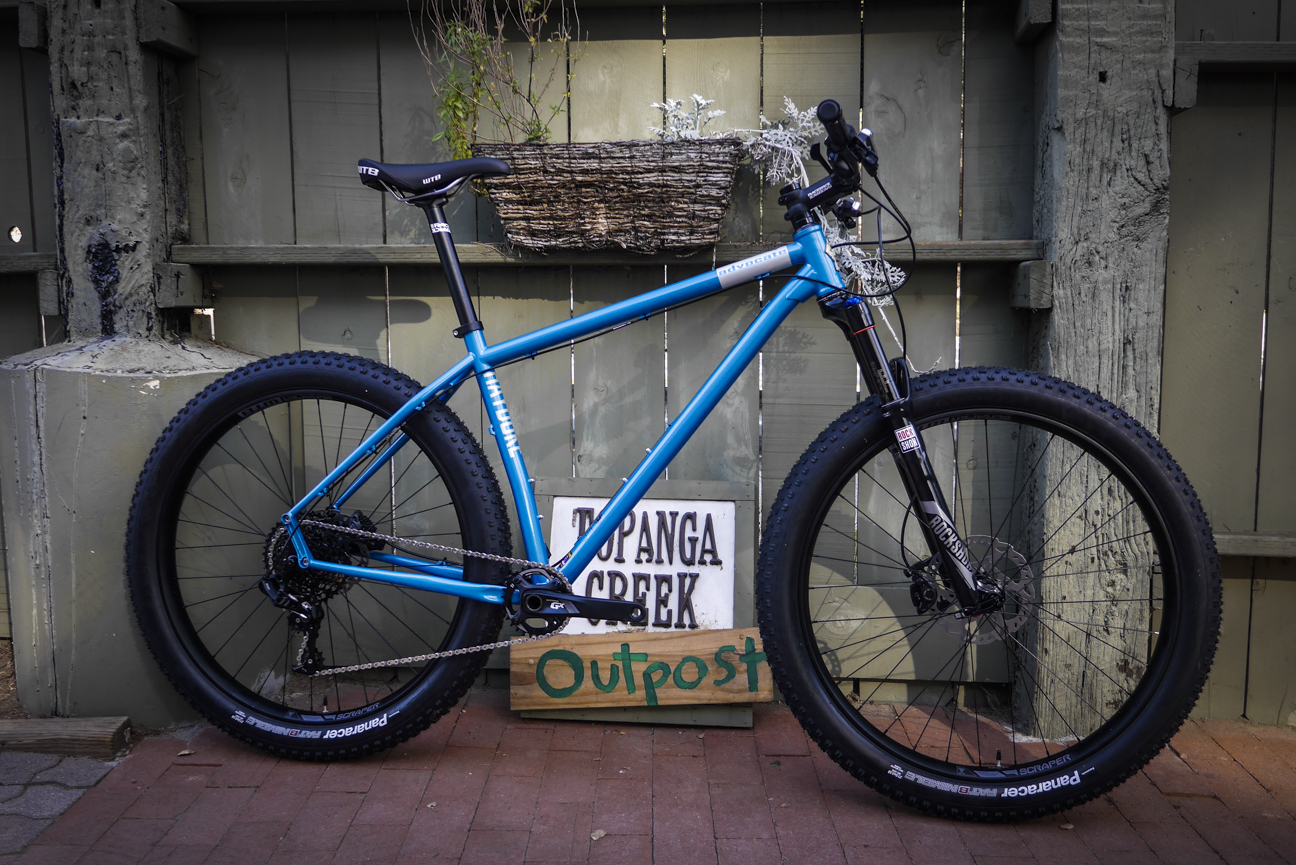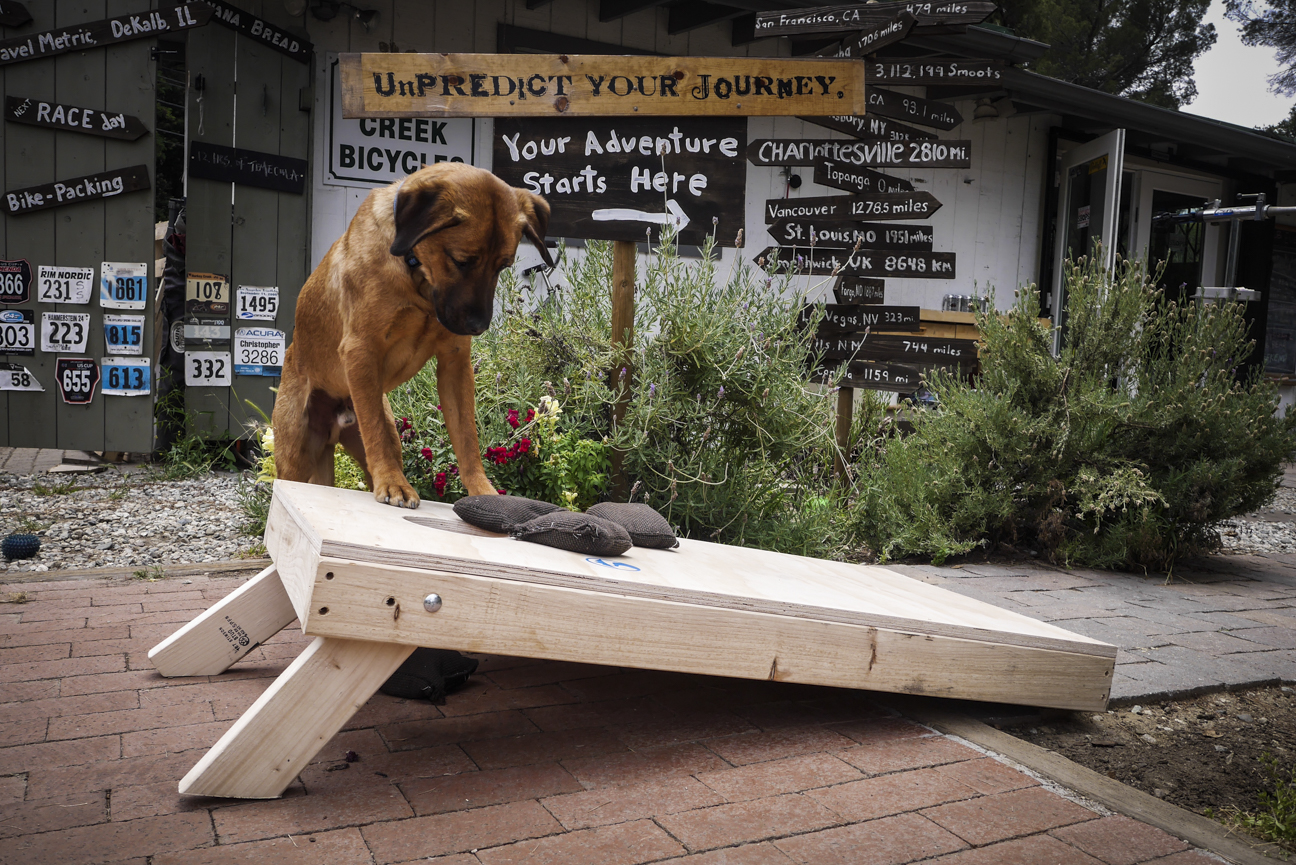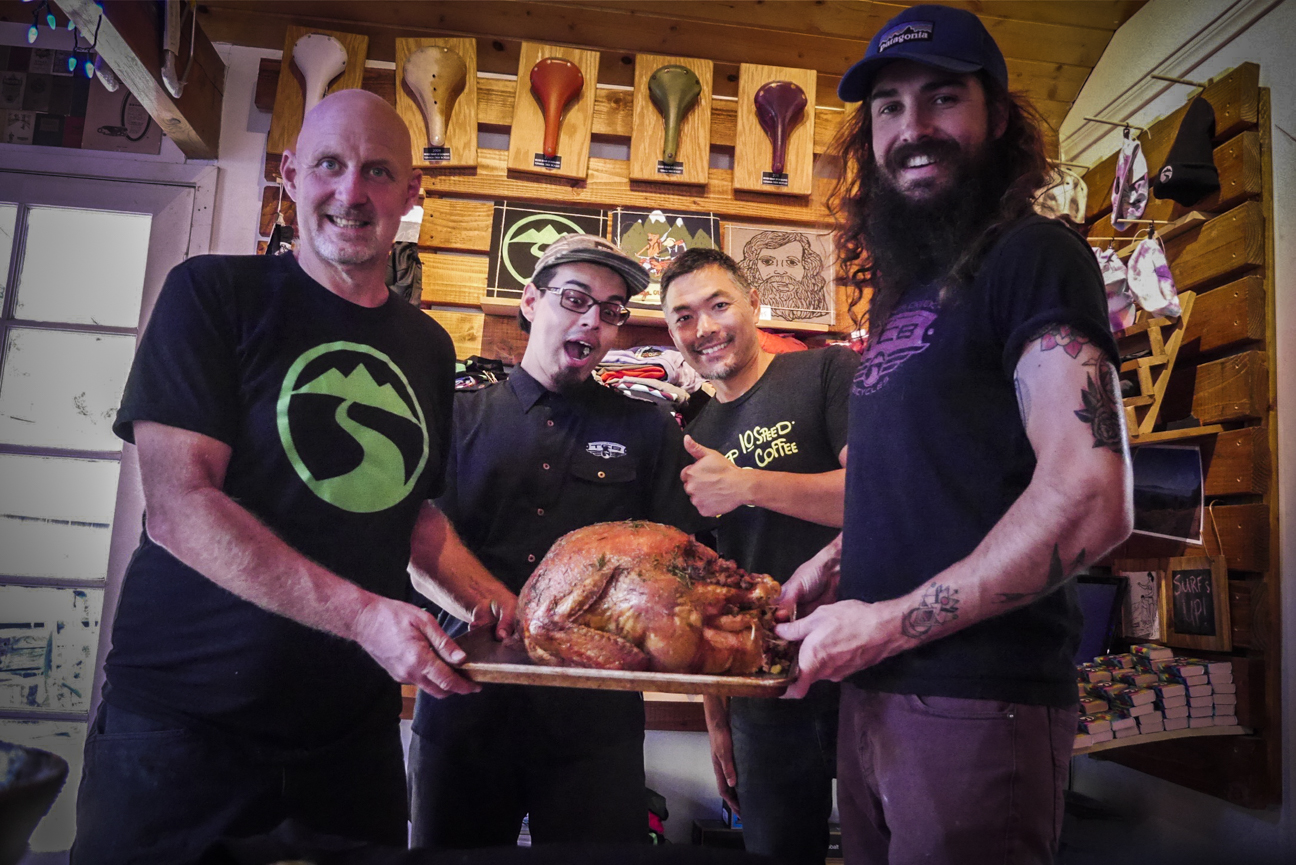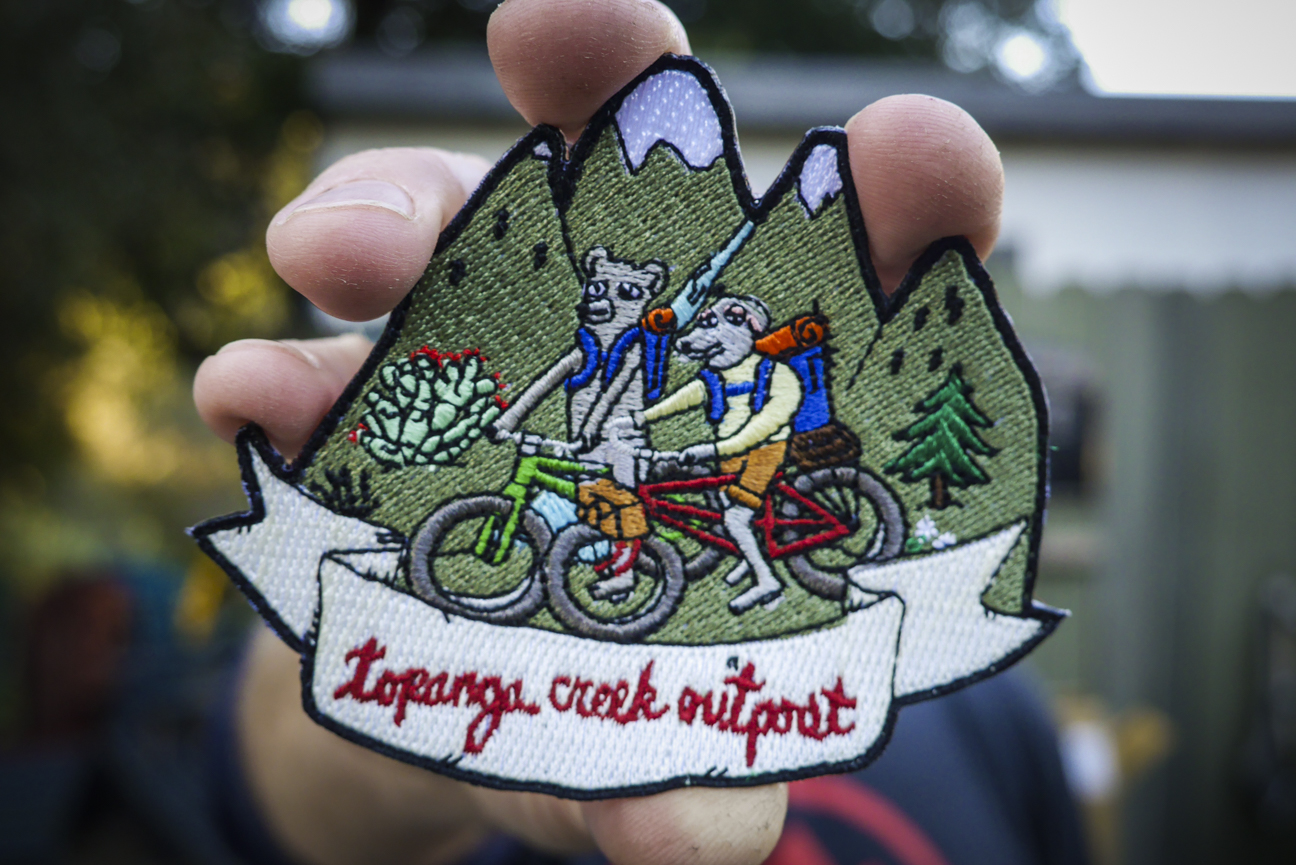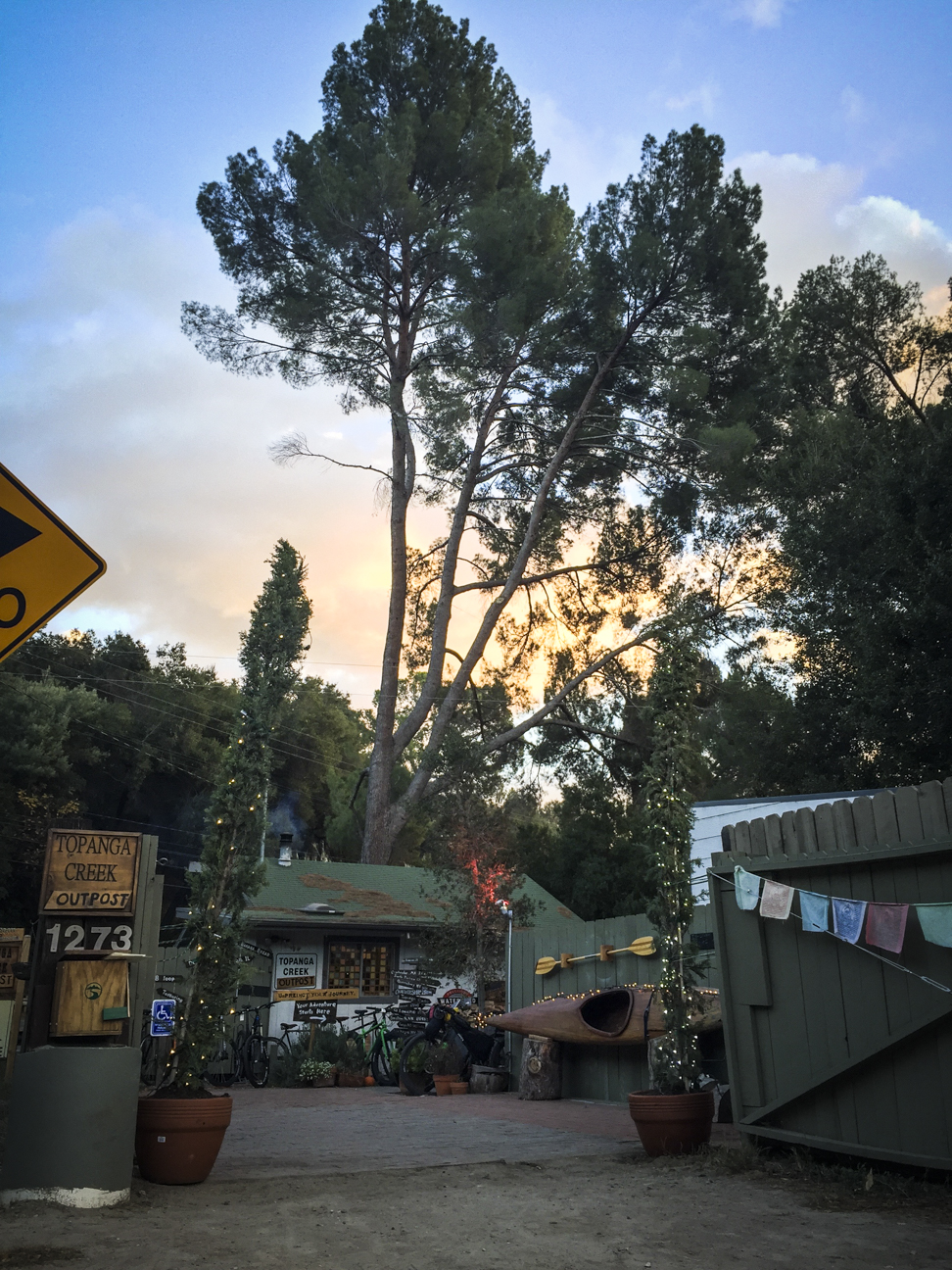Words and Photos by Cedar Kyes
The stagecoach is a roughly 400-mile collection of desert road, double and singletrack and enough pavement to keep you honest. It was co-created and organized by Brendan Collier of the Hub Cyclery in Idyllwild, California where the event begins and ends. The route was created with the idea of a multi-day adventure ride in mind and it takes riders through a diverse collection of southern California surroundings from vast desert, high mountains, coastal regions and a bit of urban. To ride the Stagecoach 400 is to experience all of the raw beauty that southern California has to offer.
Embarking on this ride was the beginning of something way bigger than I had ever imagined and luckily, the start of the Stagecoach 400 was as informal as I had hoped it would be. While most people do treat this event as a race or ITT (Individual Time Trial), I was treating it more like a long bike ride with one of my good buddies, Brendan.
I was content to watch the crowd gather and cheer them on as they departed in a kind of bikepacking critical mass that rolled out of town and down the highway towards the first long climb of the route. That climb would ultimately put a huge amount of distance between myself and the rest of the pack. Having embarked on this journey with literally zero training—and couch legs that had barely seen any physical activities all winter long—I was in no hurry to get the suffering started. I instinctively knew that I needed to ease into this ride if I wanted to have any chance of finishing.
After the initial warm-up and shakedown of my bike and my body, I was starting to find my pace and trust these wagon wheels. Having just built this fresh Advocate Cycles Hayduke with 29” wheels for the long journey ahead and having never ridden a 29’er before, there was a slight learning curve for me. After the first long descent, I was feeling comfortable enough to let it rip. The decision to build the bike as a 29’er would definitely pay off over the course of the ride for me—I don’t think I had the fitness to push a fully loaded plus-sized bike the entire distance of this route.
Since I had fallen way off the back of the pack on the second long climb of the day, I took this opportunity to take a look back at where I had come from earlier that morning—this was the last time I would see the snowy peaks of the Idyllwild area for quite awhile.
Eventually, after a long morning out back, I met up with my crew again. Brendan had a mechanical malfunction right at the start of the ride, which set him back a little bit. That delay gave me the head start I needed to get my legs and lungs working well enough to try and keep up with him for a few days.
Brendan and a few others caught up to me just in time to pull me along towards Sunshine Market with the promise of cold beer and sandwiches. I was happy to see them and even happier to crack that beer, which would be the fuel I needed to keep on the wheels of this steady paced crew for the rest of the day and into the night. We would ultimately end up pushing on into the late night hours and pitching camp in a cow pasture somewhere deep in the SoCal Countryside.
Morning came far too quickly and we needed to get back in the saddle in order to reach our destination for the day. Part way through the morning, we stopped at an old abandoned country store to soak up the morning vibes and ease into our day. While the others enjoyed their lightweight snacks, the genius of my morning coffee ritual became clear to the crew. I brewed a few cups and distributed with egalitarian generosity. I got the impression that most of the Stagecoachers don’t bother with a stove or coffee on this route. I’m not sure what would possess anyone to embark upon such a journey without and it sure did make this morning more enjoyable for us all.
Dropping into Black Canyon after our stop, the super green countryside funneled into the canyon and sent us spiraling down into a lush gorge filled with wildflowers and water flowing through huge boulders in the creek beside us. With all of the rain that California received throughout the winter, there were tons of crossings and streams where people had rarely seen water flowing before. Unfortunately, the fun would come to a screeching halt for me. After making a ridiculous navigation error and succumbing to a serious lapse of reason, I was left hopelessly chasing the crew for the rest of the day.
After losing a couple hours to some sort of physical breakdown, I finally came back to the world of the living and crawled out from under the bushes where I had lost consciousness trying to rehydrate myself in the shade. I’m pretty sure my body shut itself down in some sort of physiological self-preservation fit of revolt. I’m not really sure how long I was out for but I eventually came to the realization that it was a bit cooler and there was more shade to be found now. I pulled myself together and pushed on. Later I would find texts from Brendan that kept me motivated to catch up to the crew again. “You’re not that far back” and “We’re at Pizza Port in Ocean Beach” were the words that kept me going. Thoughts of cold beer and warm pizza were coursing through my numbed mind. So, onwards I charged towards the ocean.
At another water crossing, I came across a woman on horseback with her dog roaming nearby. The horse was taking a drink from the stream—I waited patiently for them to clear the crossing. I must’ve looked like I had just died and been reborn because this woman was genuinely concerned about my well-being. She asked where I was going. “To the beach” is all I could muster. She asked if I lived there or had a car waiting there. “No, neither of those” is what made it out of my mouth. She proceeded to question me about what I was doing there. I was able to articulate the basics about riding from Idyllwild to San Diego and back to Idyllwild and that I was trying to catch up to my friends who were already in San Diego. She offered me a ride to meet back up with them and said she would drop me off a few blocks away so nobody would ever know. I was tempted but I told her that I had to do this on my own. She then offered to say a prayer for me—I gladly accepted. It was a very nice prayer—warm and genuine—and I felt that she fully believed in its power. I thanked her and jokingly said, “I hope that helps me climb up this steep hill ahead.” She knew that it would. Thank you stranger! I thought of how nice that gesture was when I got my first glimpse of the Pacific Ocean.
Just as the sun was setting on the second day of my Stagecoach 400 ride I made it to Torrey Pines State Park. Even though I was in a bit of a hurry to catch up with my crew, I stopped for a moment to soak it all in. This was in itself a huge accomplishment for me. I had just ridden from way up in the Mountains of Idyllwild all the way to the Pacific Ocean—in two days. I met up with the crew in San Diego and we spent the night at a friend’s house in the city.
Exiting San Diego and heading back into the mountains, Day 3 would prove to be the most challenging of the entire ride. I struggled to keep up with the pack for the entire day and fell off the back on every climb. After the last re-group at a gas station in Alpine, I, decided that I needed to fall back and ride at my own pace if I wanted to finish. It was not a pretty moment for me—not until I finally got out of my head, listened to my body, and looked up at the beauty all around.
I was literally one click or call away from the wambulance when I realized that there was no rush and I could just soak it all in and finish the ride on my own pace. I also realized that I was just past the point of no return and it would be harder to bail out than it would be to continue forward. So, I sat there for a while and got my head straight. I watched the sun set and felt it cool down considerably. I had great lights and lots of battery power left and decided that I needed to ride more in the evening hours when it was cooler. This was a critical epiphany for me and I continued the relentless climb into the darkening night.
I coached myself through the next few miles of the route and, reading through the cue cards, learned that there was a restaurant and country store on the other side of this climb—giving me inspiration to push on. I made it up and over that mountain and on to the restaurant but it had just closed. Luckily, the store was still open so I grabbed a cold beer and a bag of chips. I found a nice little spot in the middle of a grassy field and I sat there under the stars, sipping my beer and savoring each and every salty chip.
I was uncertain about the next move. The cue cards alluded to the notion that there was another store at the campgrounds a few miles further along the route. “She makes great burritos for the Stagecoach riders” it said, which was the motivation I needed to push on into the late night hours. It was a sluggish uphill push on muddy trail but it was very peaceful.
When I rolled into the campgrounds I found a spot to throw down my sleeping bag and the nearby stream serenaded me to sleep. I slept like a baby all night and well into the morning. I took my time packing up and wandered over to the store. It was closed. As it turns out, most of the stores on the rest of the route are closed on Mondays and Tuesdays. I was able to refill all of my water and headed out for day 4.
This day featured a relentless climb up and over Mt Laguna. There was little to no shade and the temperatures were rising by the minute. Thankfully, the trails were pretty awesome and the views were amazing. I took my time and listened to my body—seeking refuge in every bit of shade that I encountered and being mindful of my hydration and nutrition, I chugged along all day. I was enjoying myself again. Even though it was slow going, I was happy to be making forward progress and I knew that this mountain had a summit—somewhere up there. I did not see or hear a single soul for the entirety of the climb. It was almost surreal how much solitude this stretch provided. Finally, I had gotten out of Babylon and into the Backcountry—this is what I truly enjoy and appreciate about bikepacking.
As I reached the summit of Mt Laguna and popped out onto the highway, I was blown away by the amazing view. I could see the Salton Sea way off in the distance and the snowy Tahquitz Peak/Mt San Jacinto way back up in the mountains where I had started the ride. The experience was enhanced from ten to eleven when I dropped in on the awesome singletrack that parallels the highway for most of this stretch. I forgot all about the long day of climbing and just ripped sweet singletrack for what seemed like an eternity. In fact, it was so good that I missed my turn and continued on the trail for quite a ways before I realized that I should be pointed in the opposite direction for my descent into the desert and to make it to the next store, which was supposed to be open until 6. This would be a critical re-supply before heading off into the most serious desert section—I was determined to make it to that store.
I knew that it would be a serious downhill into the desert from here. Once I was certain that I was dropping in on the right track, I let it all out. I’m not sure many people have gone as fast on a fully loaded bikepacking rig. It didn’t stop. I smashed through rocks and drifted into corners and in retrospect, it was downright foolish—I was determined to make it to that store in time.
The shreddy downhill gave way to a sluggish sand trap and my roll was slowed tremendously. I somehow managed to keep afloat in the sand and rolled it all the way out to the pavement where I put the hammer down and made it to the store with minutes to spare. It was closed—spring hours.
Welcome to my desert oasis. While it was indeed true that the store was closed, I did find what I needed to continue on my journey. There was a sign on the door that said to track down Doug for after hours registration. I wandered over to Doug’s place and knocked on the door. Nothing. As I was walking back to my bike and kicking rocks, I saw a guy headed in the same general direction as me and I called out “Hey there, are you Doug?” No. It was not Doug. “Doug is off today. It really pisses me off when he closes the store.” Meet my new friend Alber—Alber is the ranch hand at Butterfield. He’s on a mission of some sort. Thankfully for me, he just happened to be right there at that exact moment. He was genuinely concerned for me and he understood that I really needed to get into that store before I could proceed into the desert. He said he would try to get the keys from Doug and open the store for me in the morning.
As I sat there in front of the closed store, I was optimistic that this would all turn out alright. Soon after, Alber came over with an apple, banana, and orange and his two young daughters running along beside him. They had each made me a sandwich and wanted to bring them to me personally—I almost cried. I could not believe the genuine kindness of this family. I went from complete deflation to complete gratitude and full nourishment of body, soul, and spirit. Those little angels shined so bright—It was truly amazing. Thank you Alber and your wonderful daughters.
He told me about the cabins and the pool and the hot shower—I was indeed in heaven. That night I had a shower and slept in a bunk bed—It was a good thing too because the wind kicked up and was howling all night long. As I was cozy inside my little cabin eating homemade sandwiches, I couldn’t help but think about the prayer that I had been granted earlier in the ride. However you want to look at it, The Universe was shining down on me.
In the morning I made coffee by the poolside and by some other stroke of luck, I ran into Alber at the store before he took off on his work day. He let me in and I got what I thought I needed to carry me through the next stretch—I was good to go.
Welcome to the desert. Massive ocotillos were like gateway guardians to the Anza-Borrego Desert and they were in full bloom as I passed through. I gave a nod of respect to each and every one of them on my passage. They seemed to return the gesture as they provided me with little bits of shade where otherwise there was none to be found. Dropping into Diablo Drop and the Wind Caves was impressive and a little bit spooky—this is definitely where the Sand People live and I did not linger long.
Back to the pavement—with minimal shade and nothing but an endless row of power lines stretching off into the horizon, it was best not to think about it too much. I put my head down and focused on cadence. It wasn’t until I got to the next store that I even looked up—it was closed. The bar across the street was open and I bellied up to the bar for a cold beer.
Here I ran into a fellow Stagecoacher who had also wandered off on a solo mission. We shared some stories and helped each other feel not-so-out-of-place in this strange desert watering hole. As I walked outside to check on my bike, I noticed that a distinct change in the weather had occurred—then came the chatter from the locals about rain coming and that we were screwed. I slammed my beer, settled up, and saddled up. There was a strong and sustained headwind for the next 20 miles or so as we struggled our way towards Borrego Springs. We rolled into town just after dark and hit up the Taco Shop before heading out of town to find a spot to hunker down for the night.
I had known about the sculpture gardens around Borrego Springs and I wanted to see them in the daylight so I steered us to this spot just outside of town for the night. It was one of the best nights of sleep on the whole trip. We were out of the wind and the sky was booming with stars. Knowing that I had a big day ahead, it was a very quick and unceremonious morning at the sculptures before the two of us took off.
Making it to Bailey’s Cabin was a milestone for me. I had ridden this stretch once before but we were coming down the canyon and it was all downhill that time. I remembered the “Willows” section of Coyote Canyon and I was a bit nervous about getting through there. The last time I passed through it was so overgrown that it felt like we were trudging through the jungle. Thankfully, it was cut way back and our passage through was easy. That did not help the fact that we were headed uphill through the canyon. It was so sandy that I had to walk for long stretches.
Finally reaching the road at the entrance to Coyote Canyon was a great feeling. Despite the fact that I knew I was in store for a really long climb, it was good to be standing on solid ground again. The climb was every bit as long and strenuous as I had imagined and I pushed onward with a great sense of accomplishment that I had come this far.
It was only fitting that I finished the Stagecoach 400 at night since I had ridden so much of it this way. The night was definitely my friend on this journey. Thankfully, I had the best lighting system you could ask for. My Lupine Lights system worked flawlessly for 6 days and 6 nights of riding while also keeping my phone and my camera charged the entire time.
I got back to Idyllwild just hours before this snowstorm hit—I had seen the system moving in and I cranked up the pace on the final day so that I might beat it. I pushed hard from Borrego Springs all the way into Idyllwild and made it in time to get a cold beer and some warm stew at Idyllwild Brewery.
Many thanks to them for finding me some hot food even though the kitchen was closed when I rolled in. Another huge thanks to Marlin and Dawne for the hot shower and cozy bed to crash in. It was a wonderful way to finish an incredible journey. Last but not least, thank you to Brendan for putting together such an amazing bikepacking route through some of the most remote and untouched places in Southern California. It’s definitely the best way to experience the diversity that SoCal has to offer and thanks for pulling me along as far as you did. I don’t think I would’ve made it without your support and encouragement.
I also couldn’t have done it without the support of my awesome girlfriend who was holding down the fort and taking care of Bushido while I was gone. I look forward to doing this ride again—I pushed myself beyond my comfort zone and I tested every bit of strength that I could muster. It was by far the hardest thing I’ve ever done.
A huge thanks for support from Advocate Cycles, Kali Protectives, Lupine Lights, Terrene Tires, Tifosi Optics & Zoic Clothing.
Until next time…
